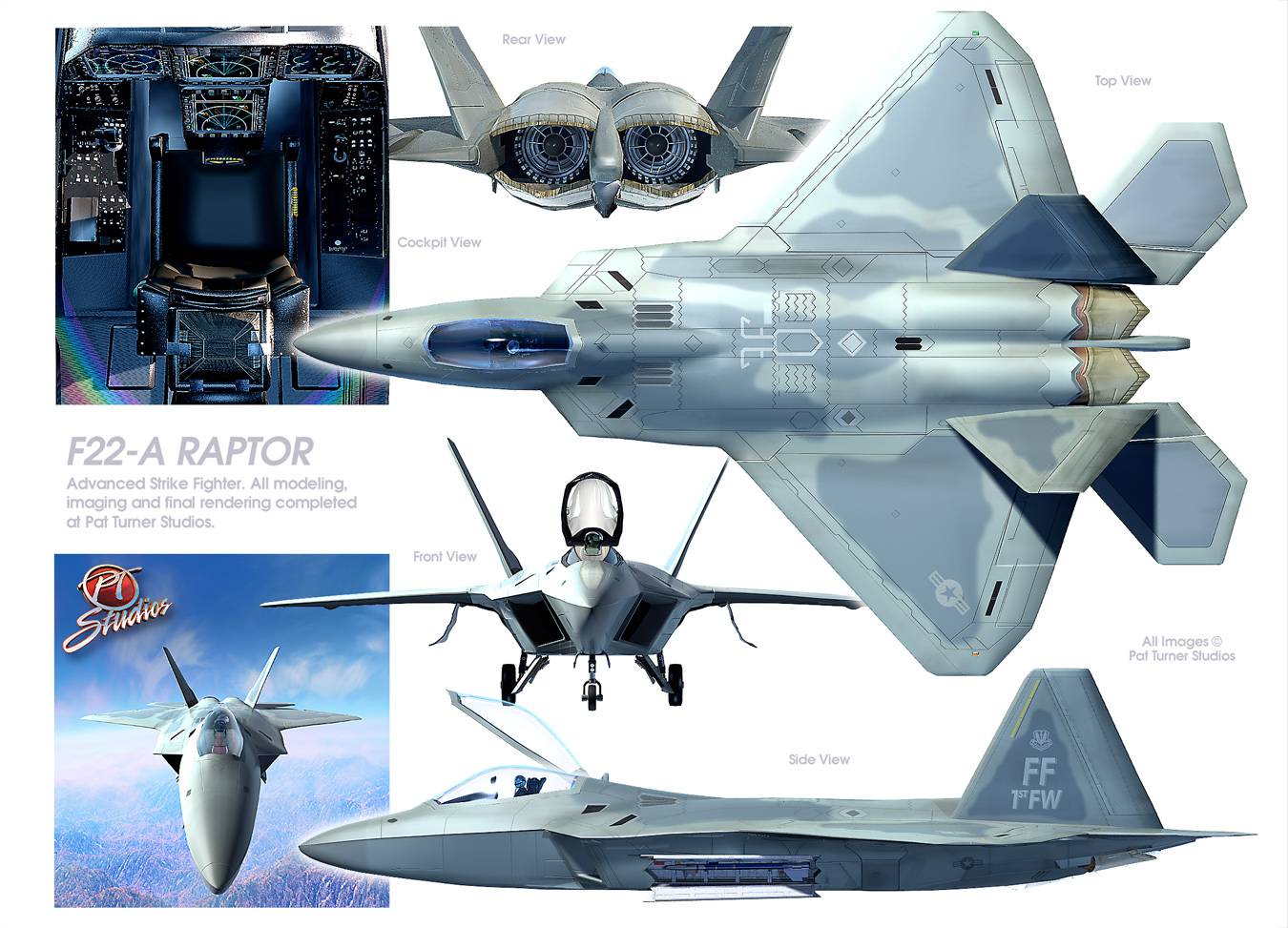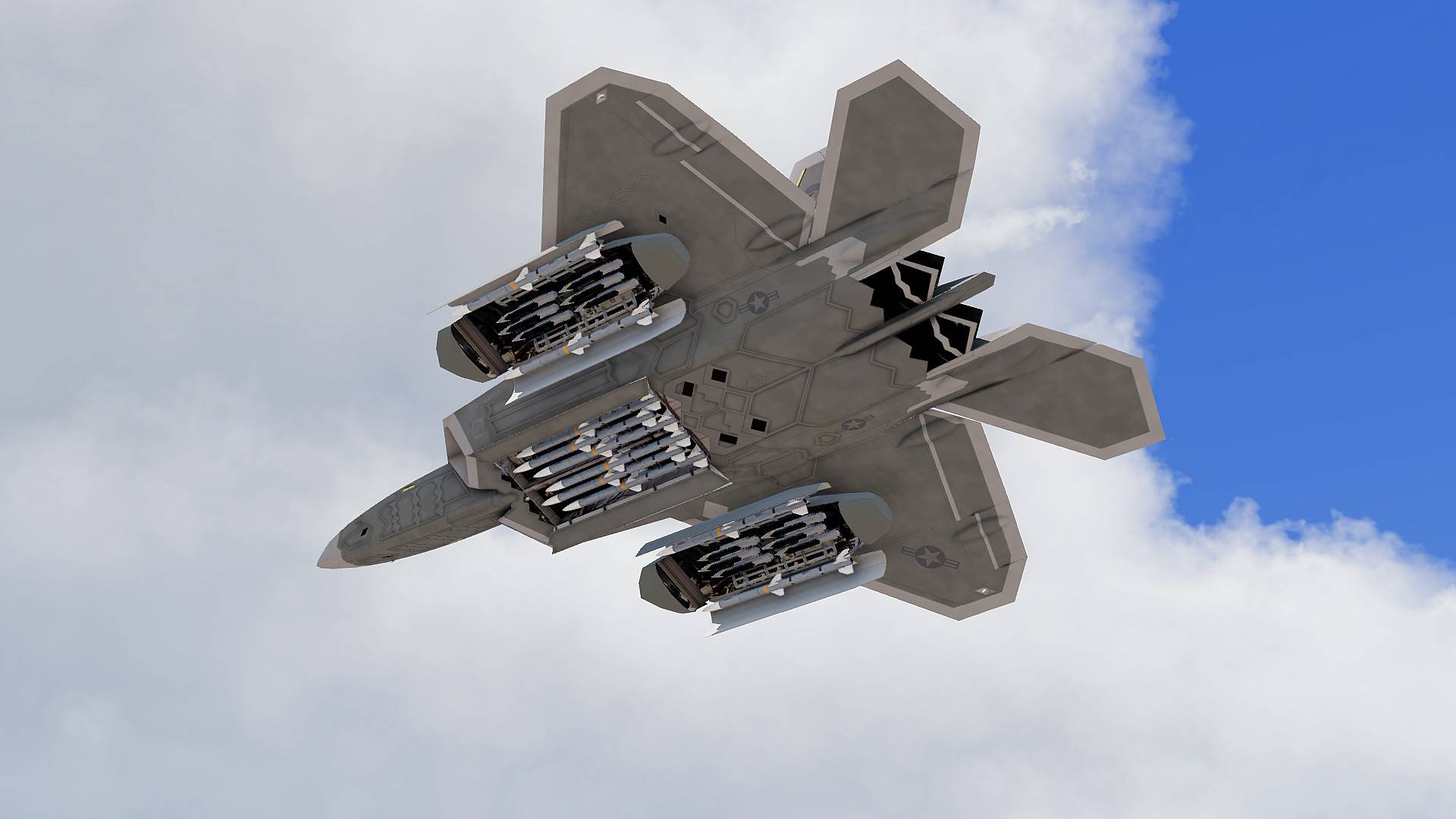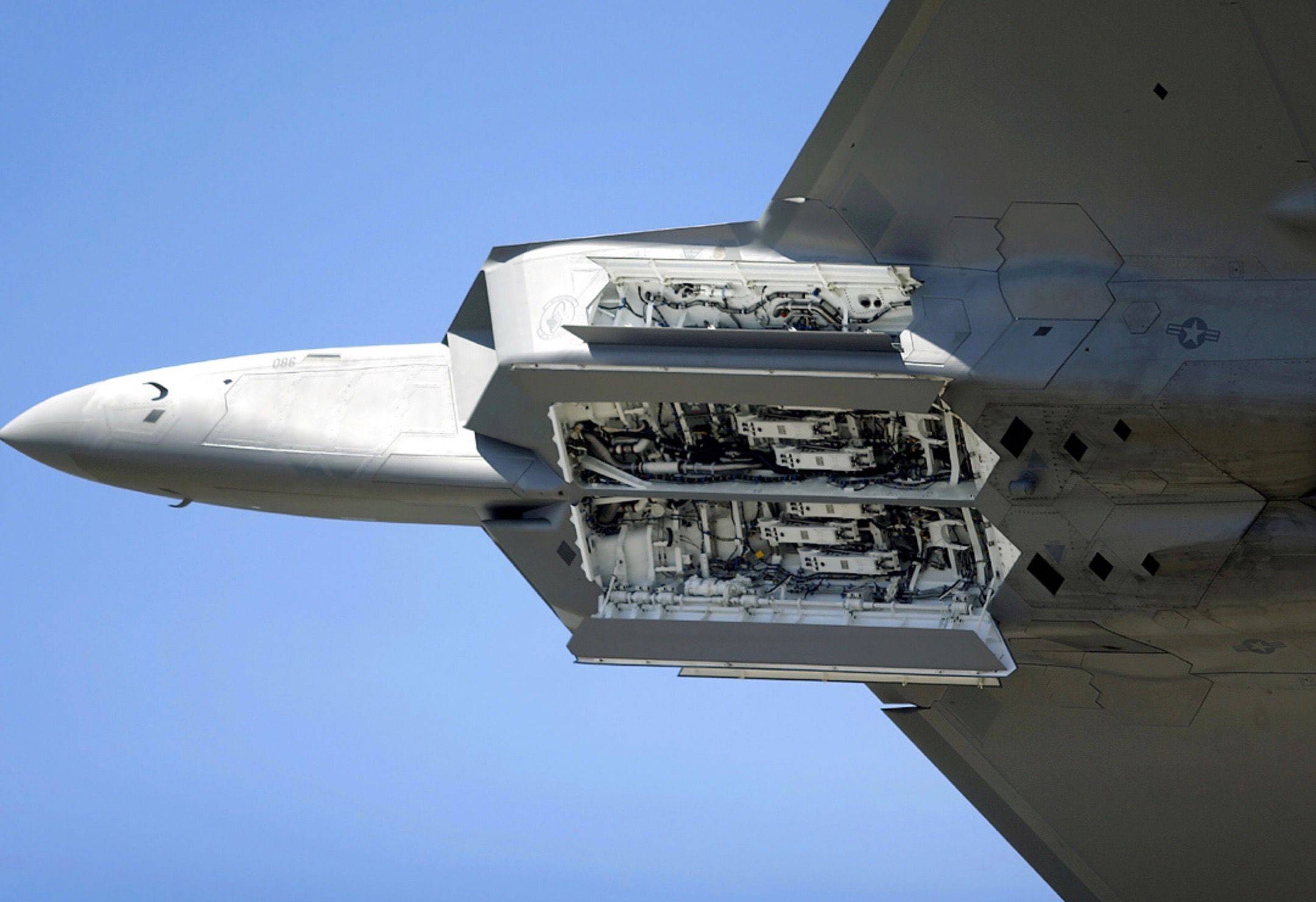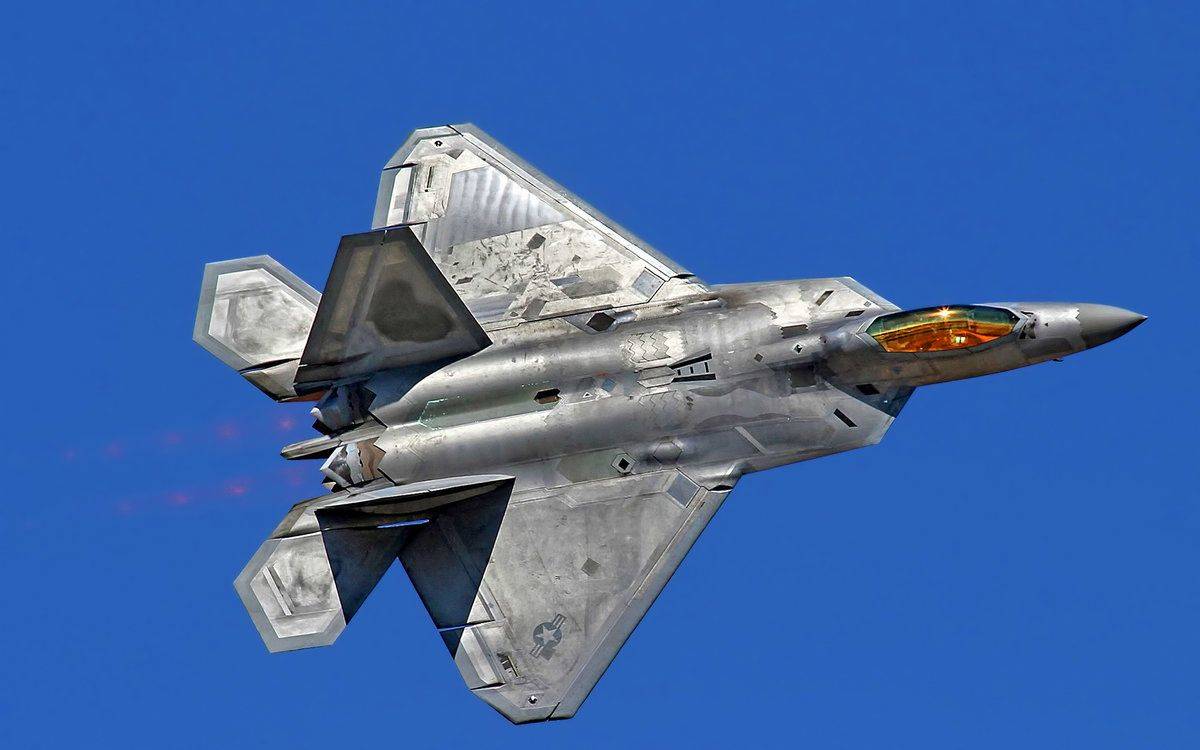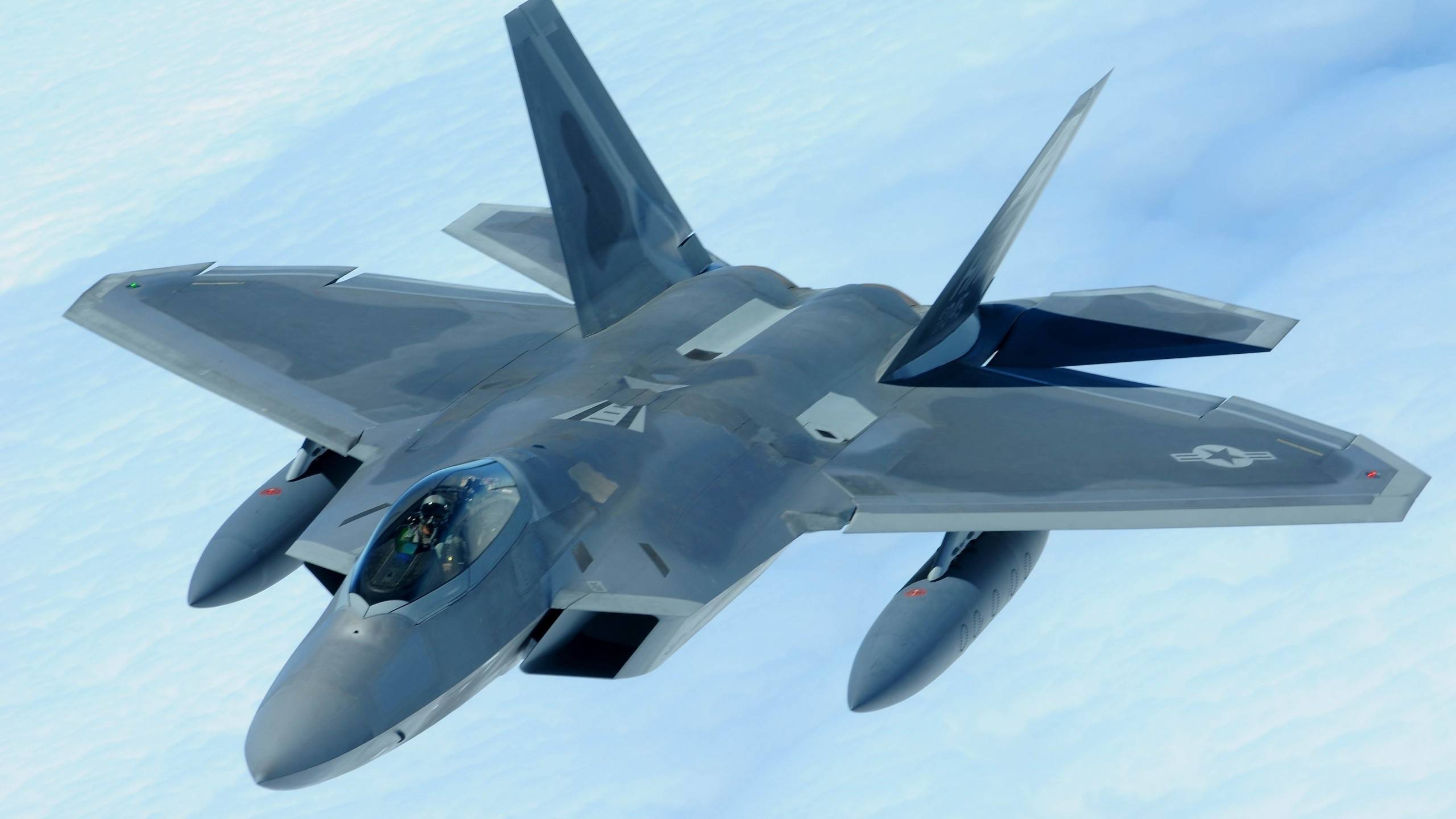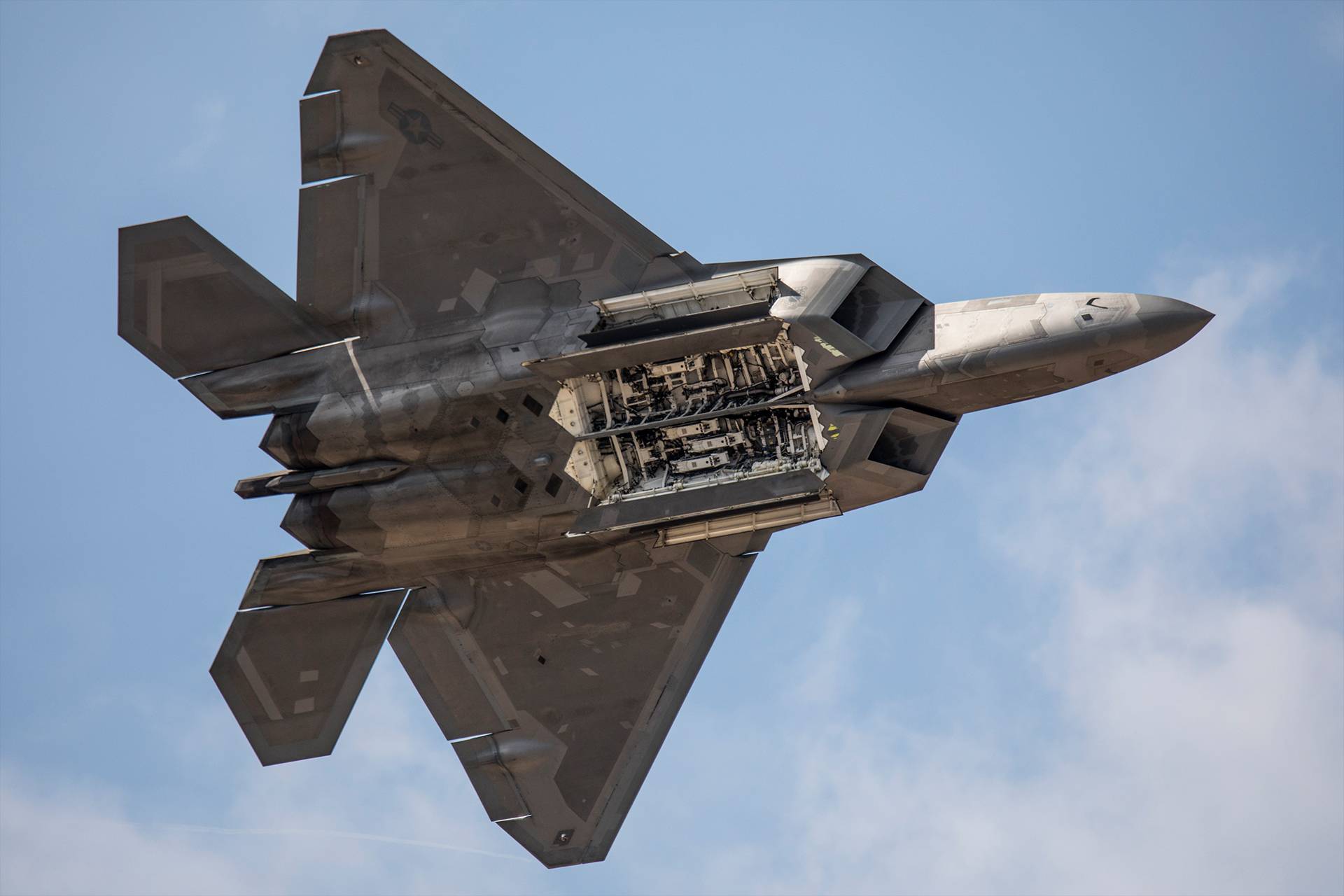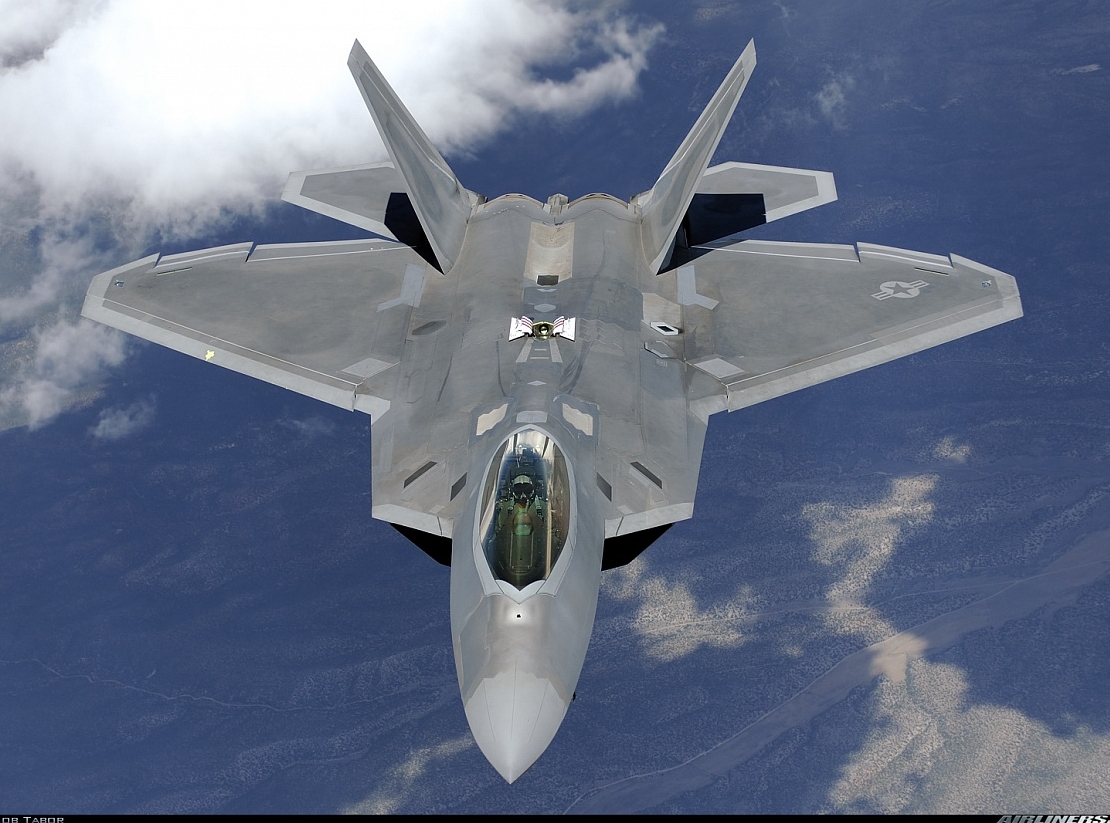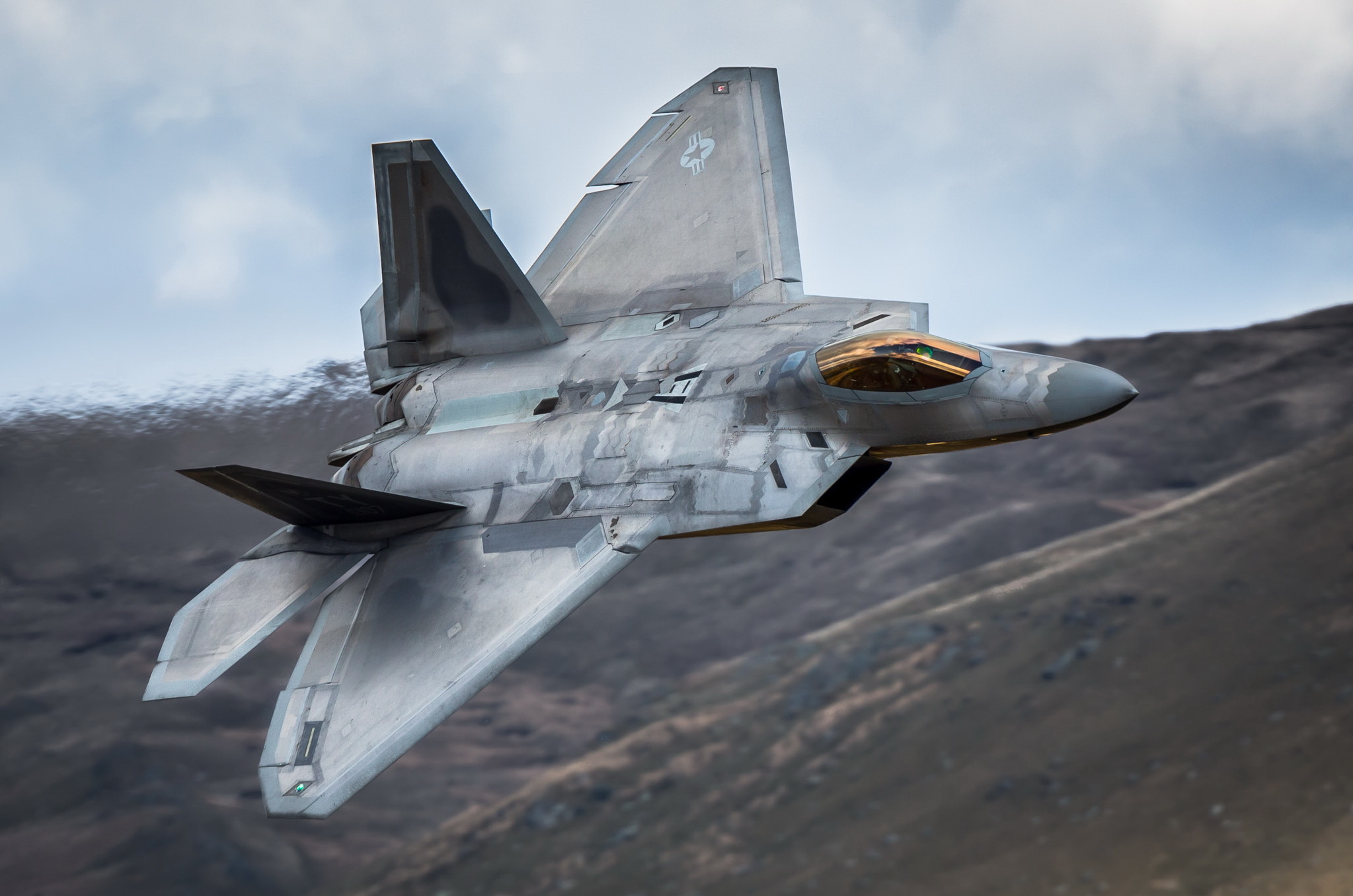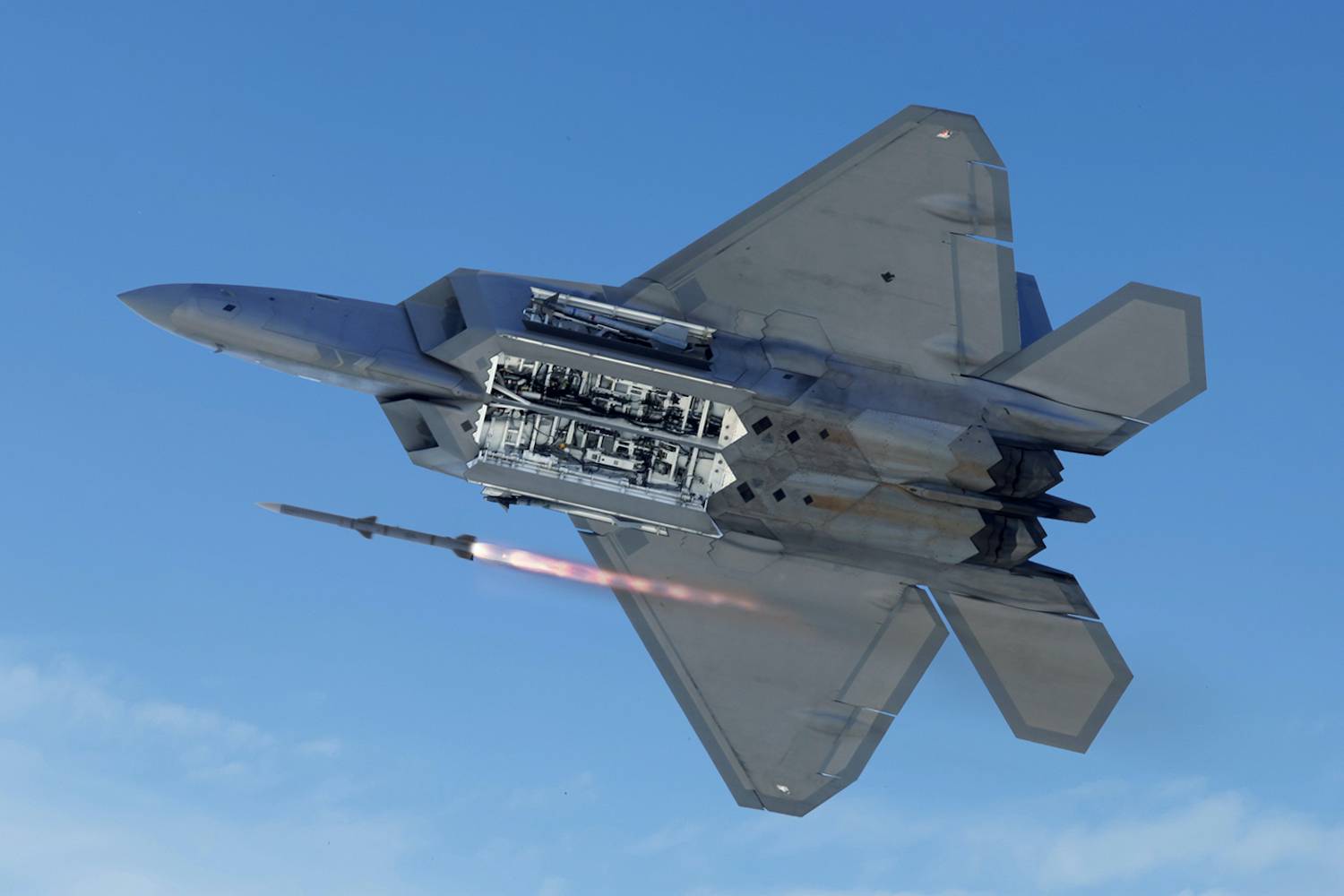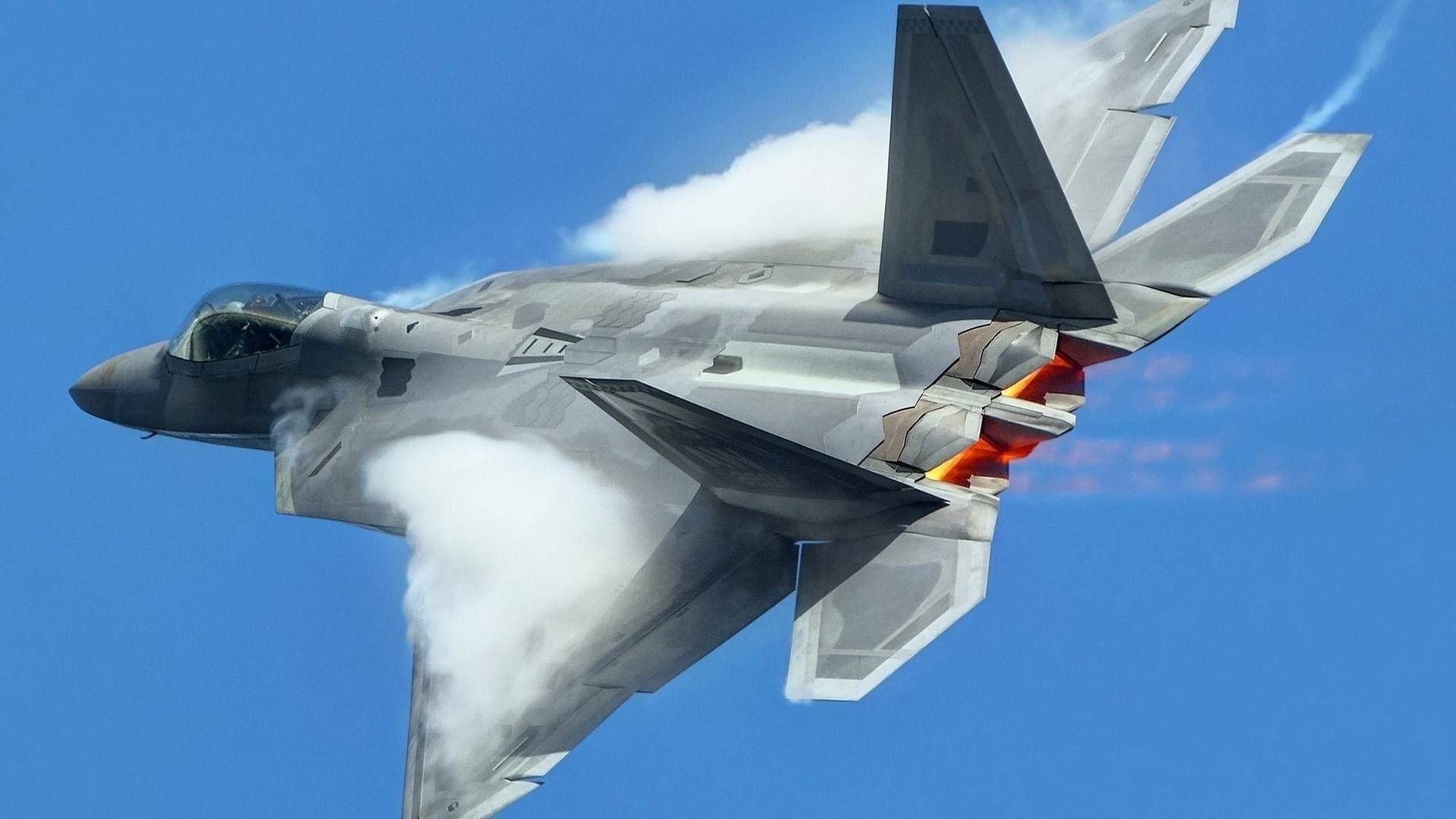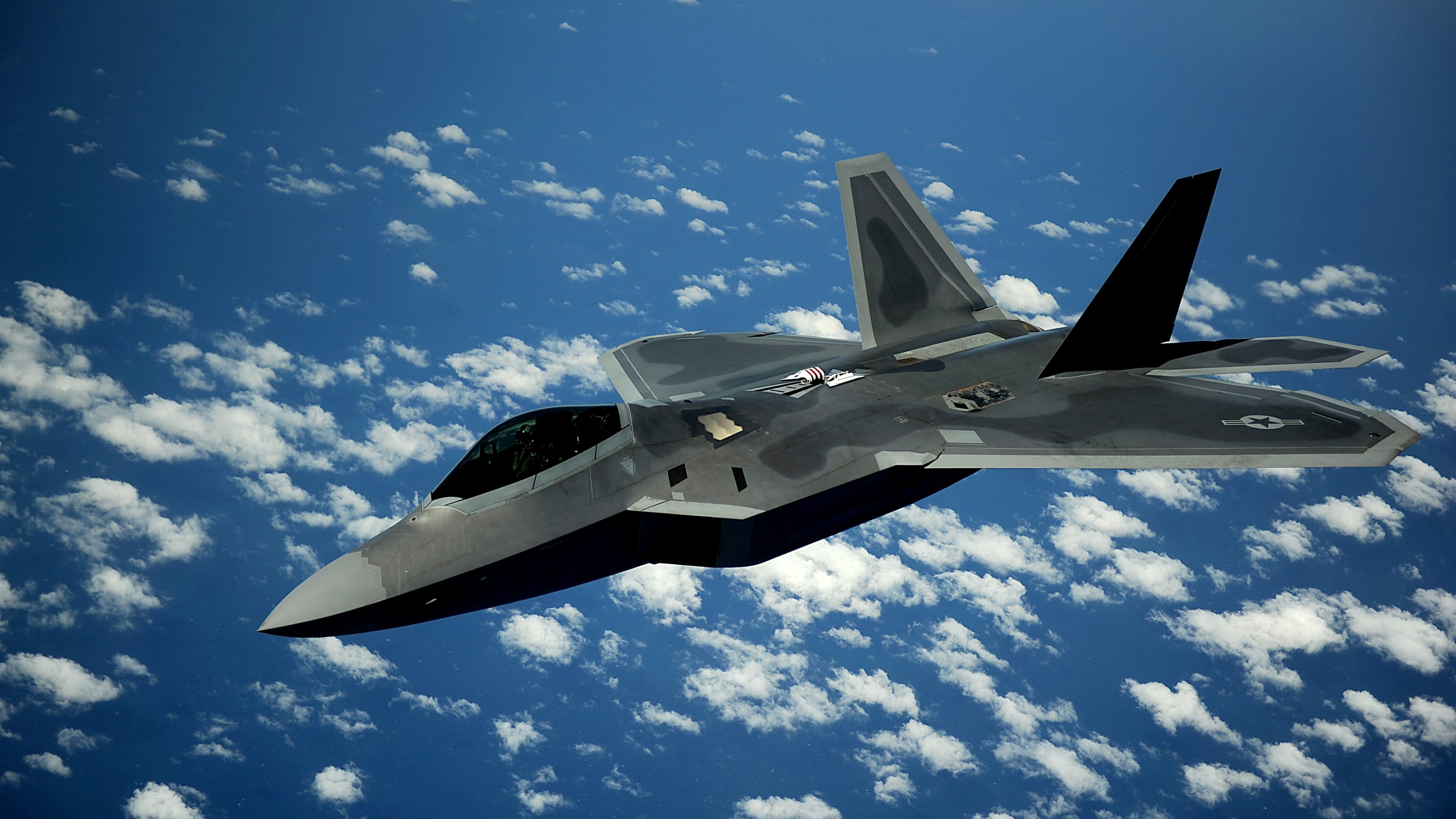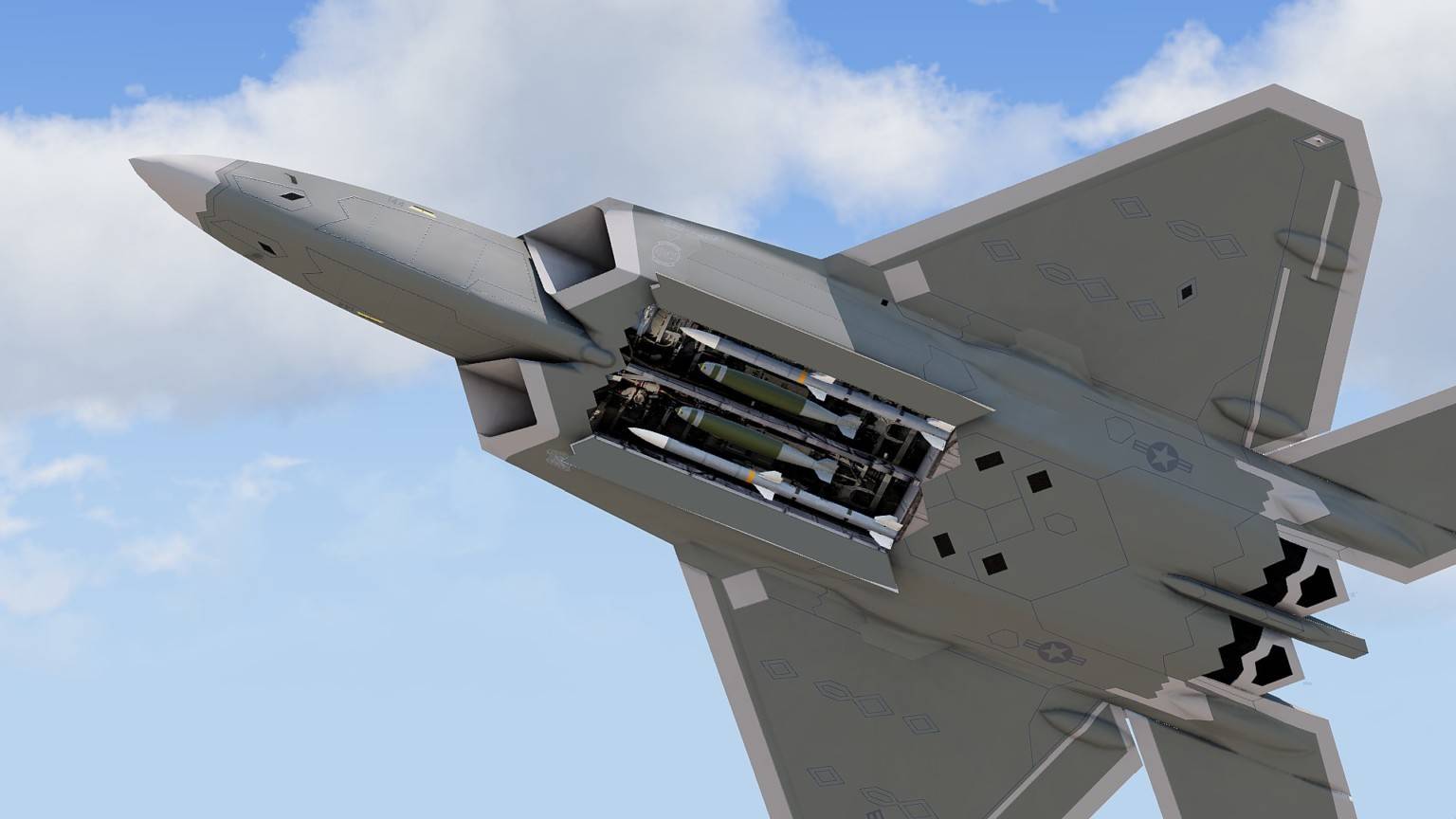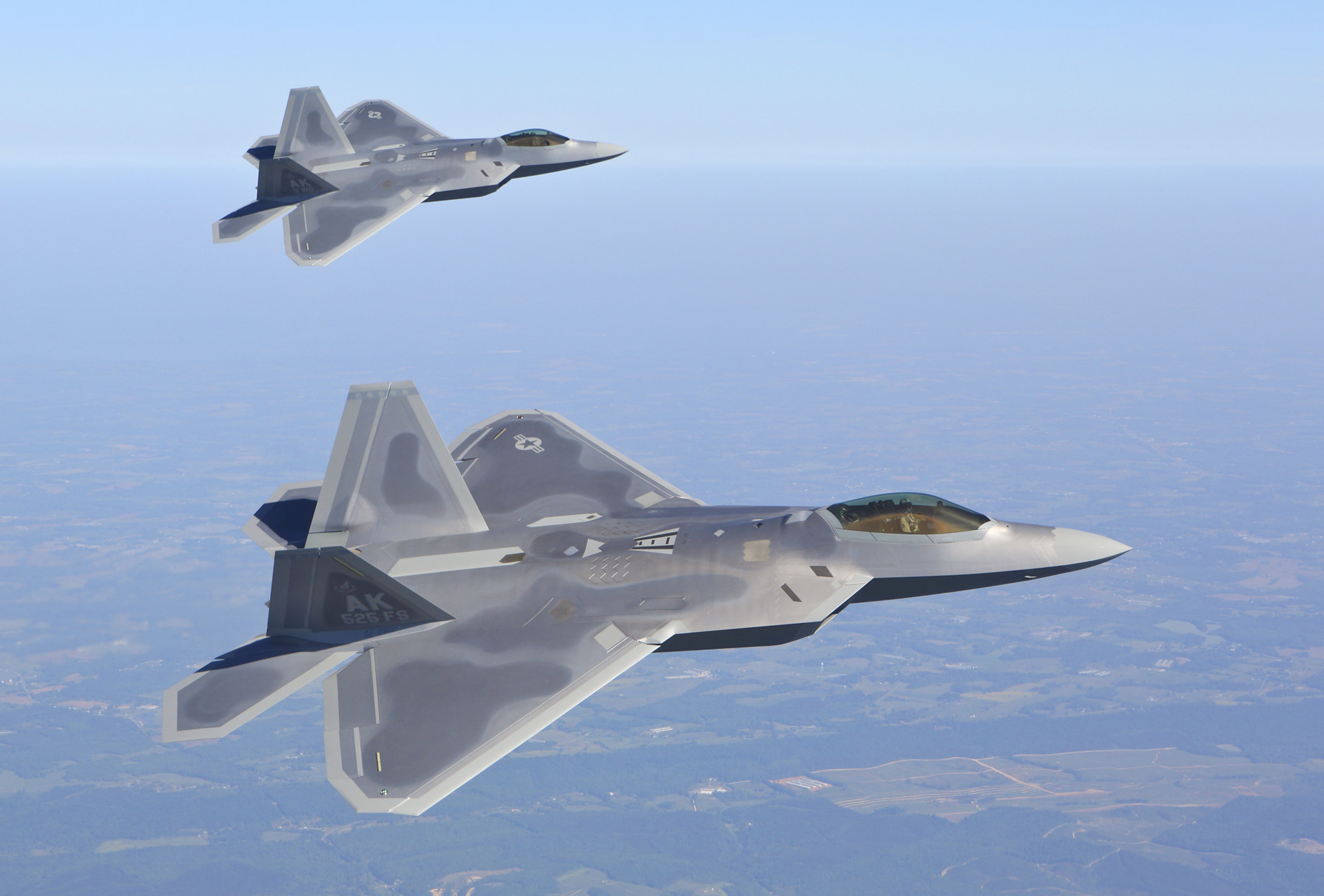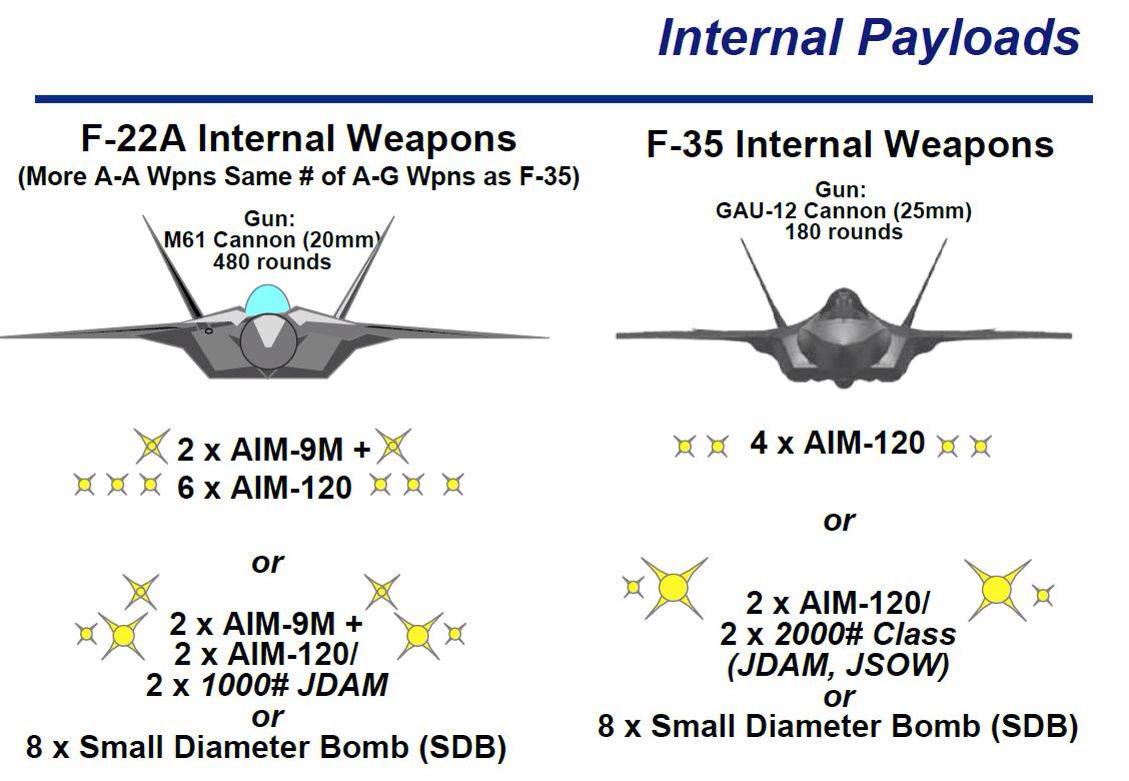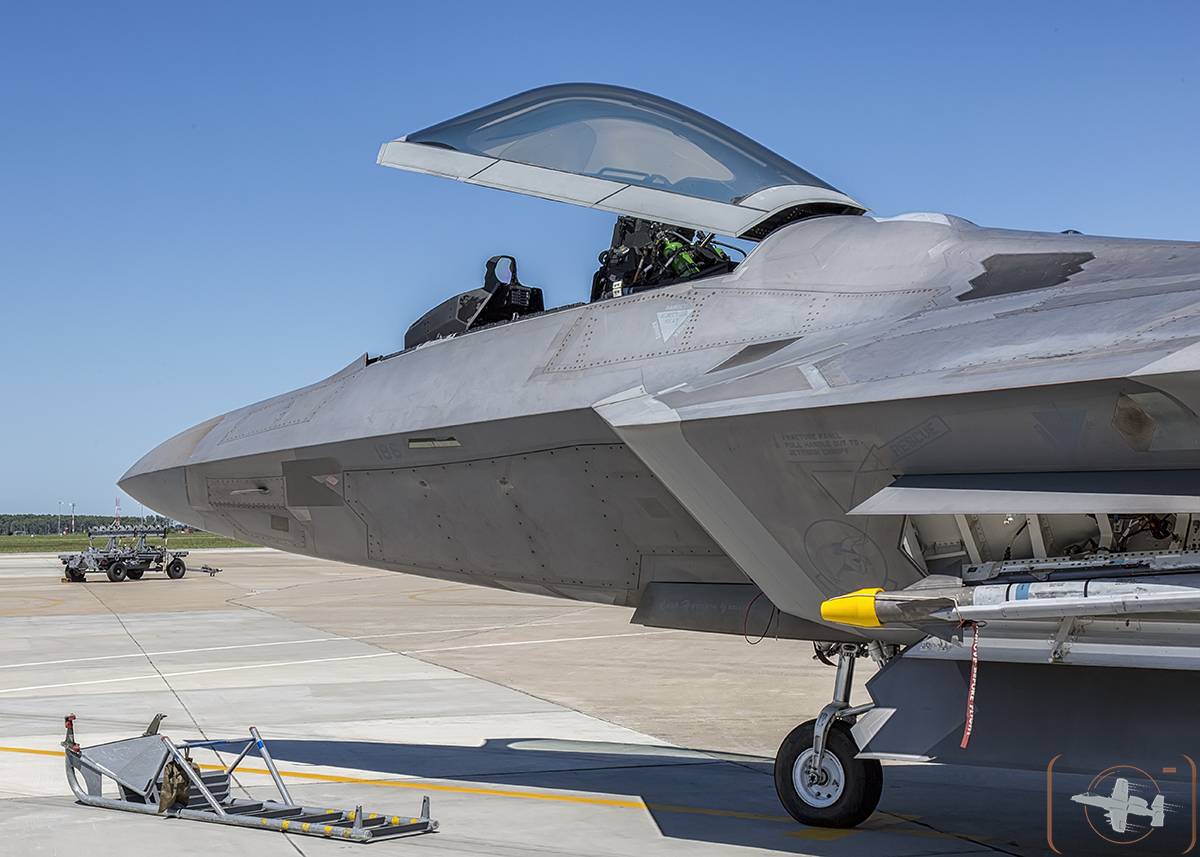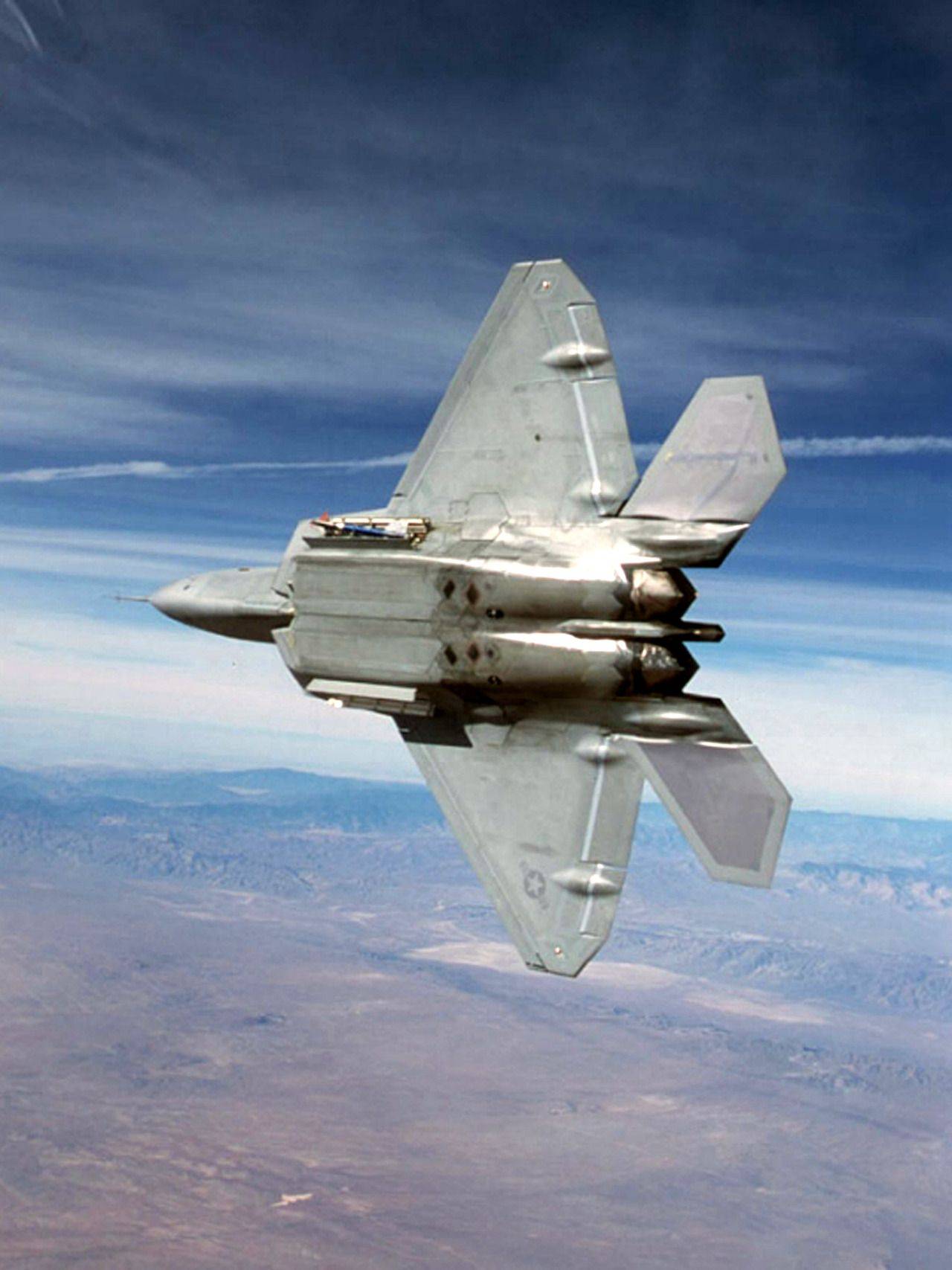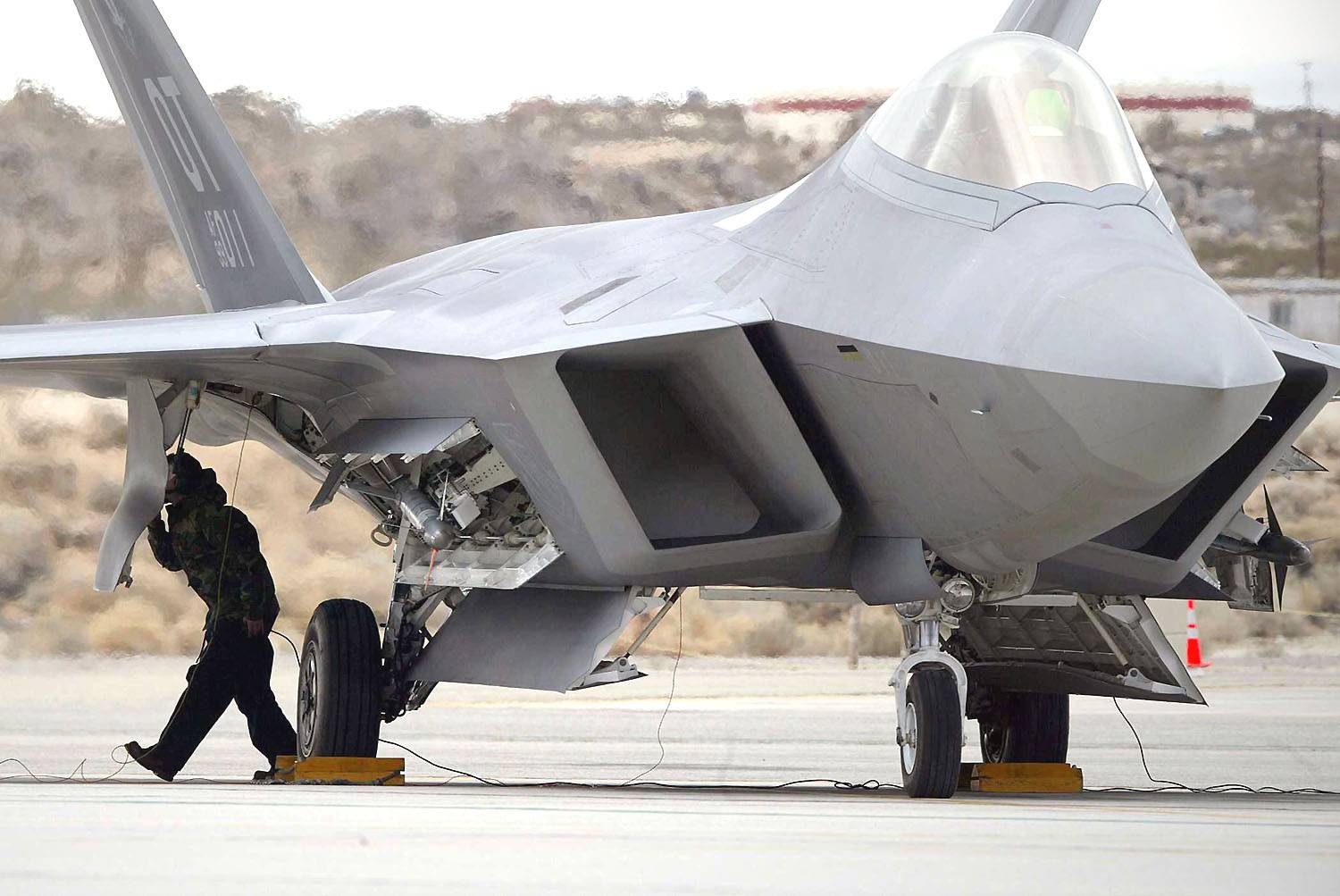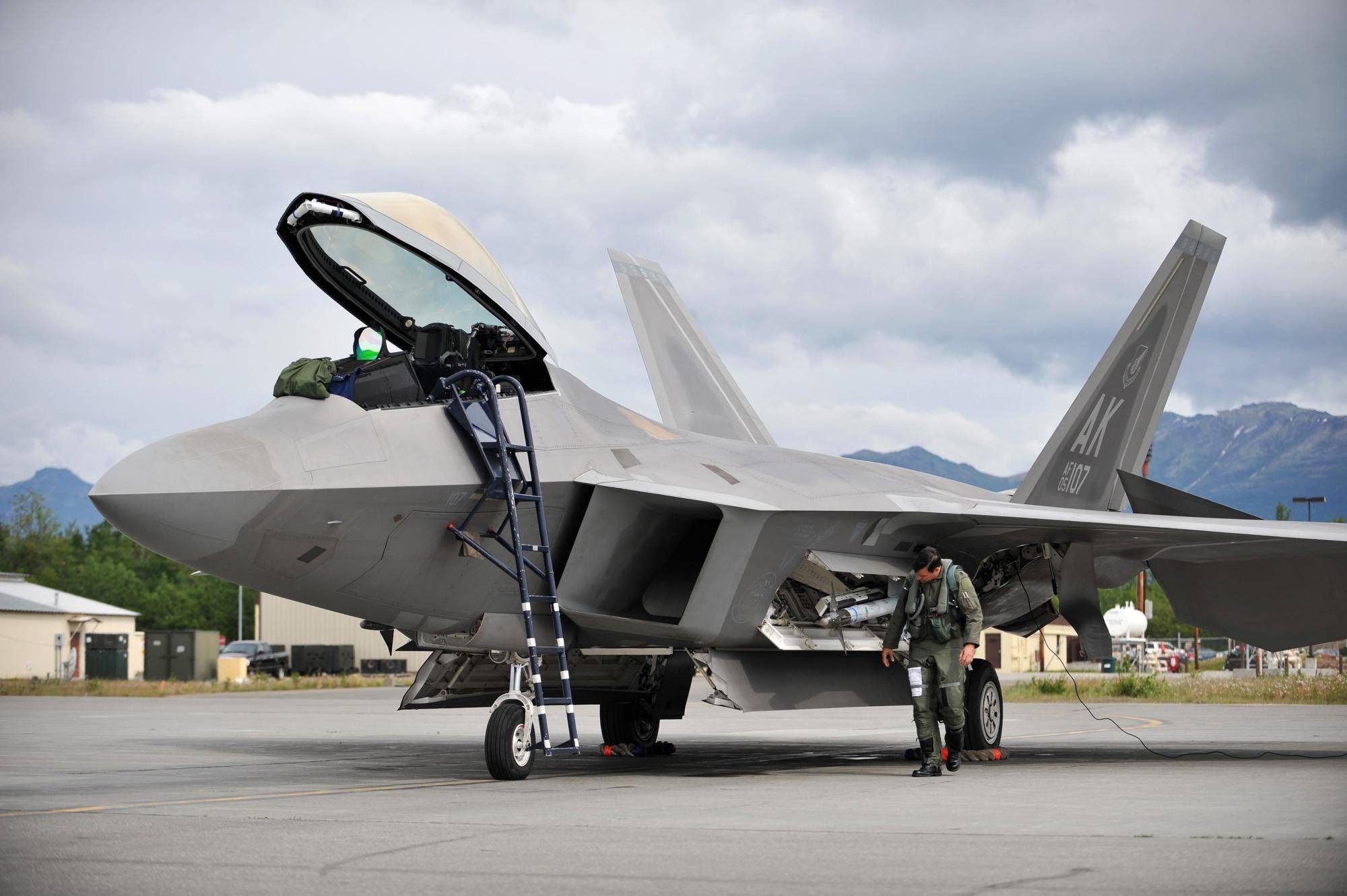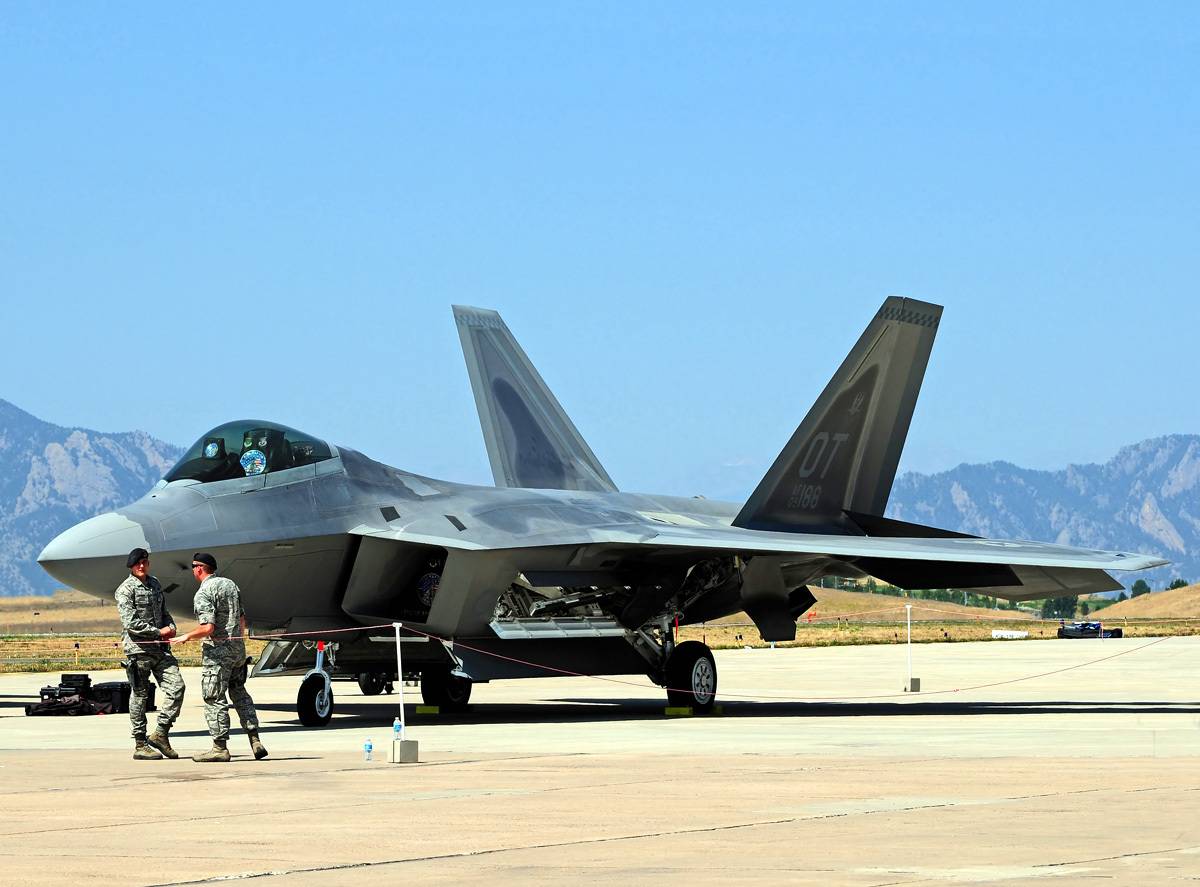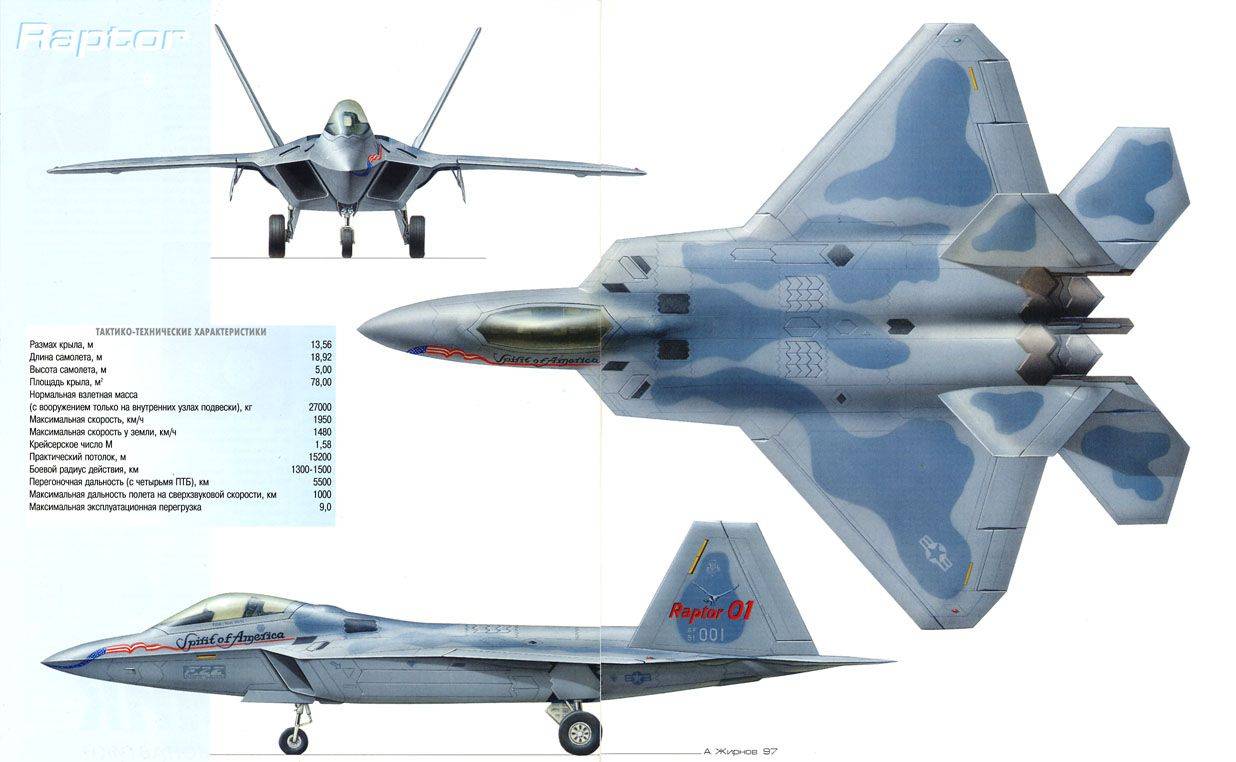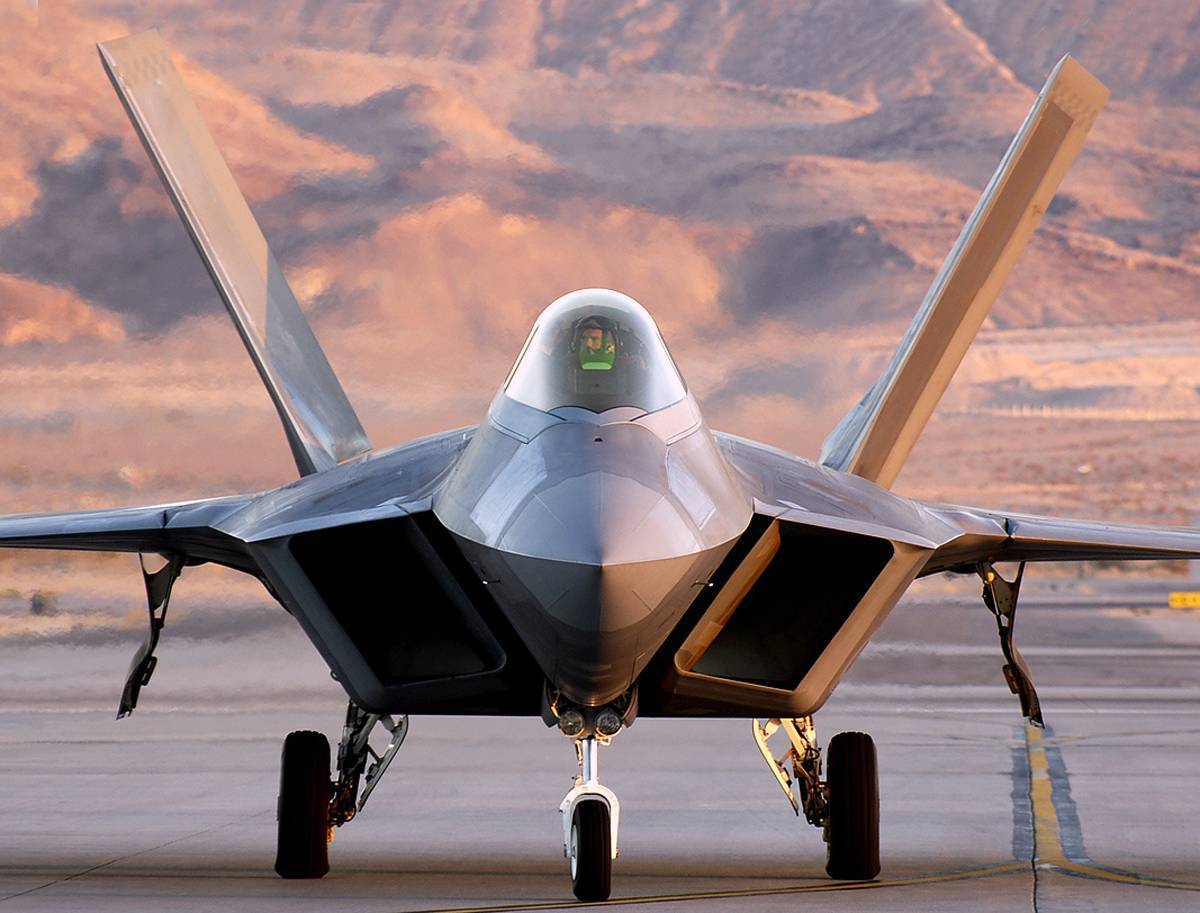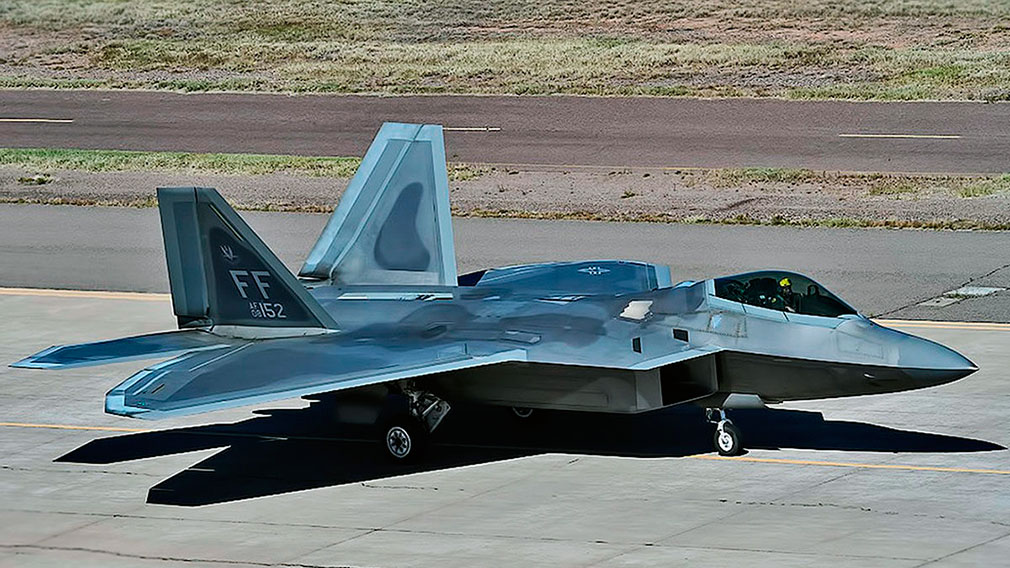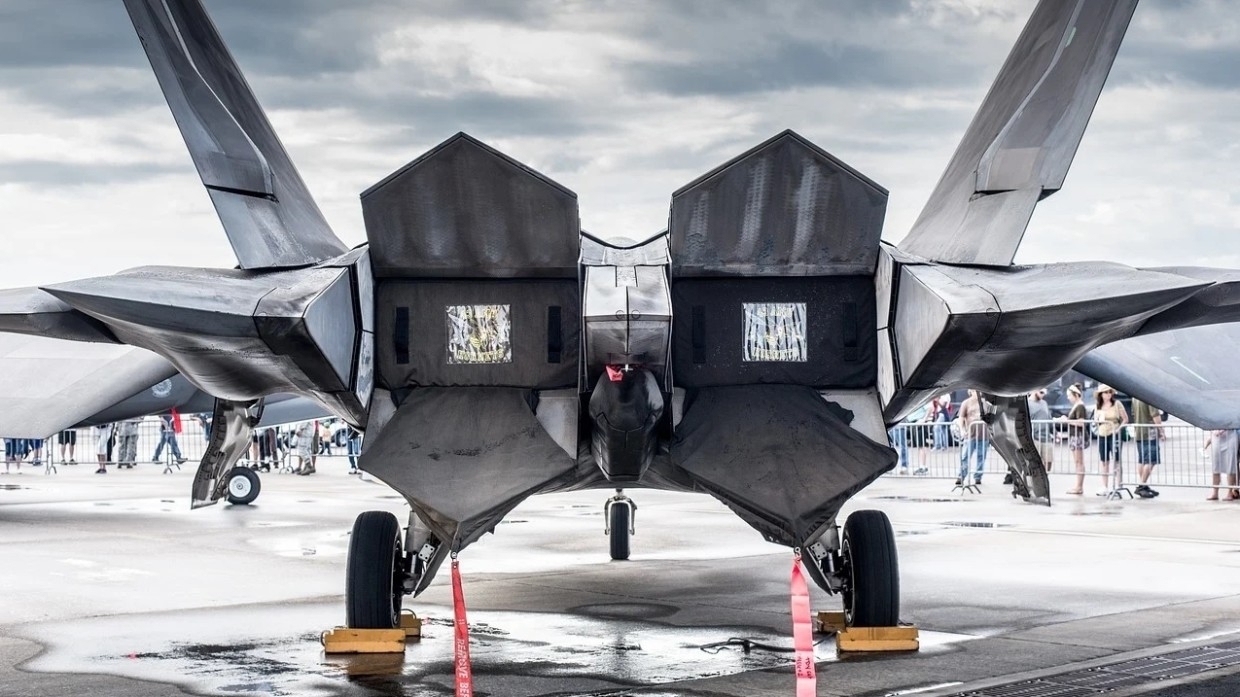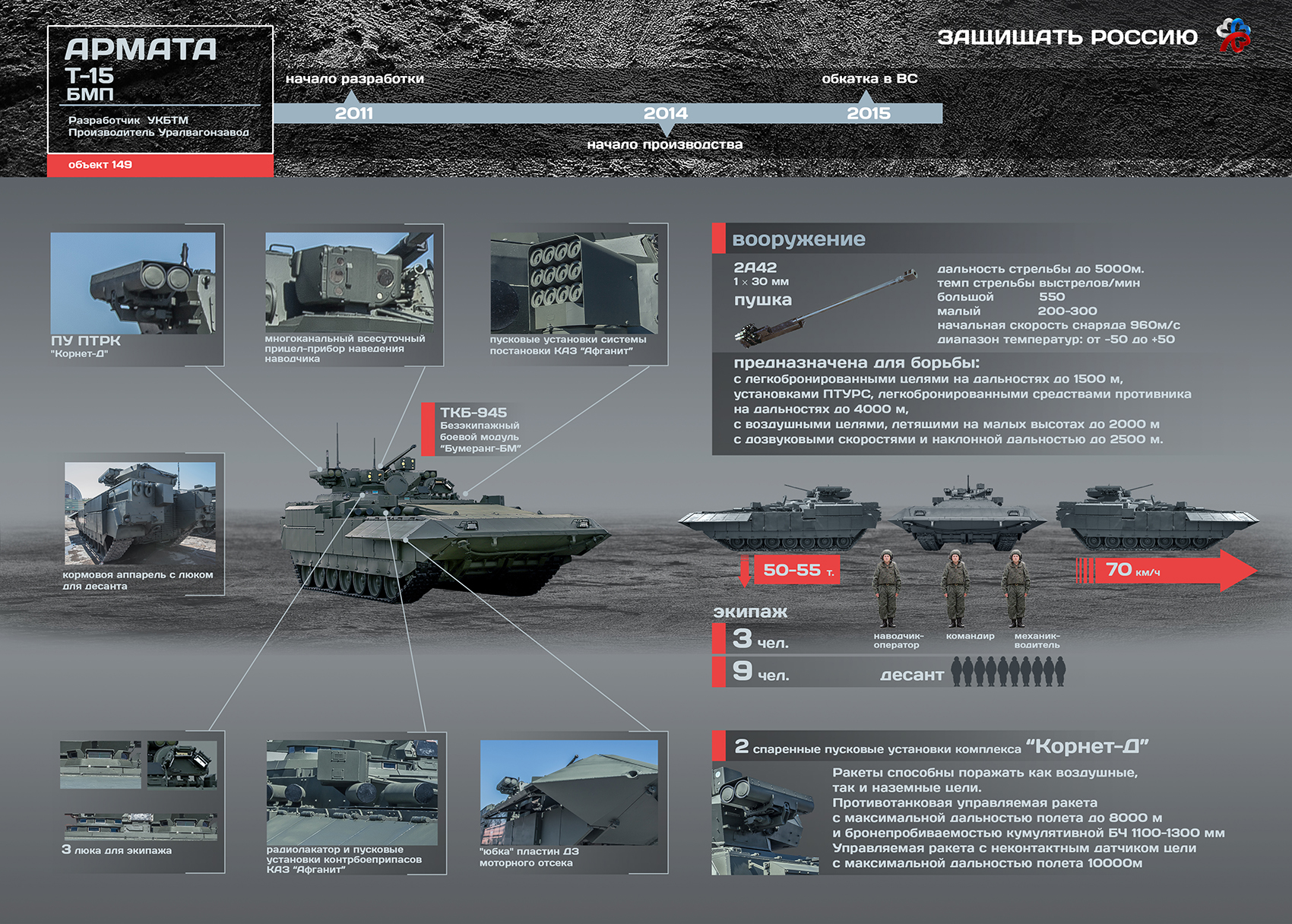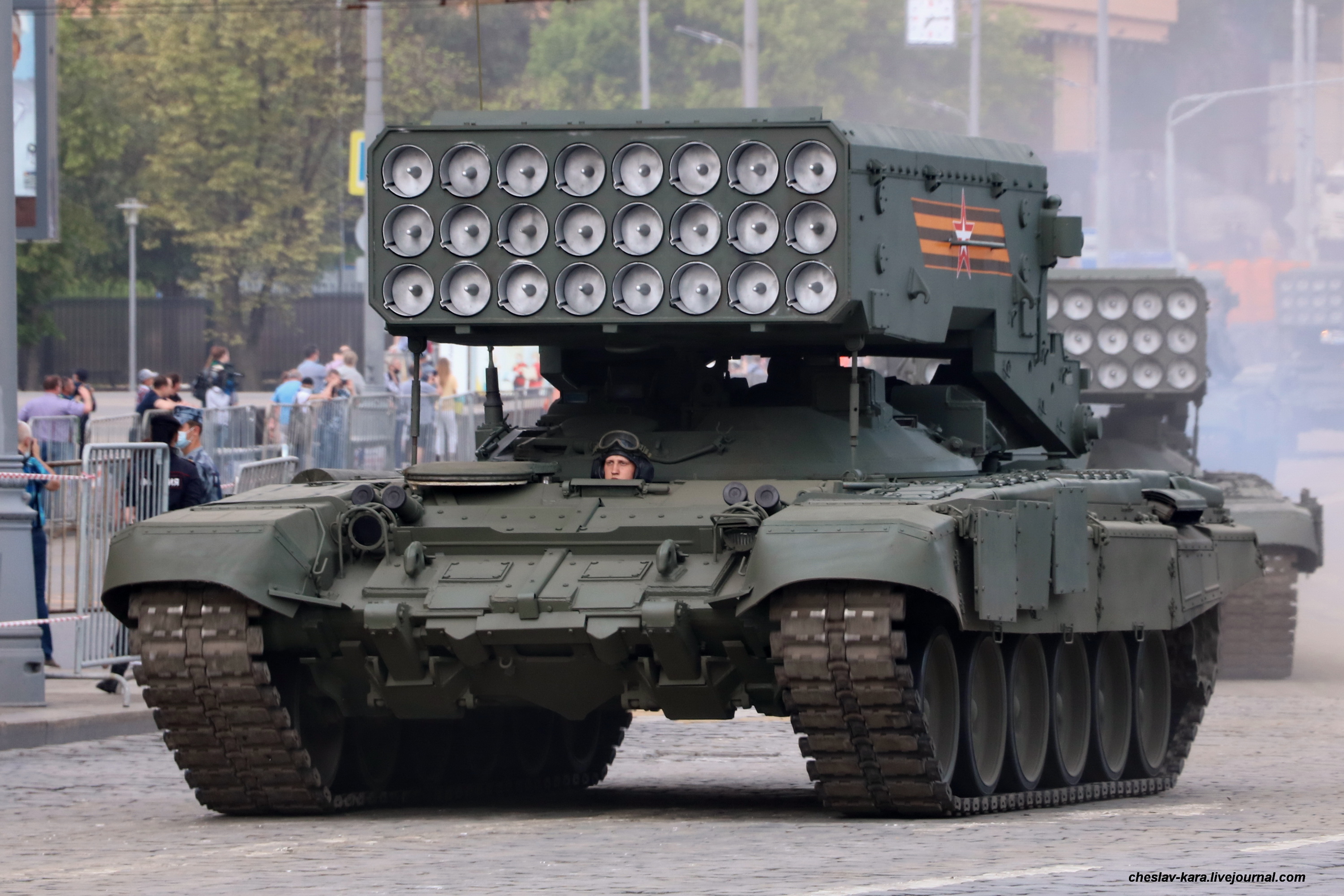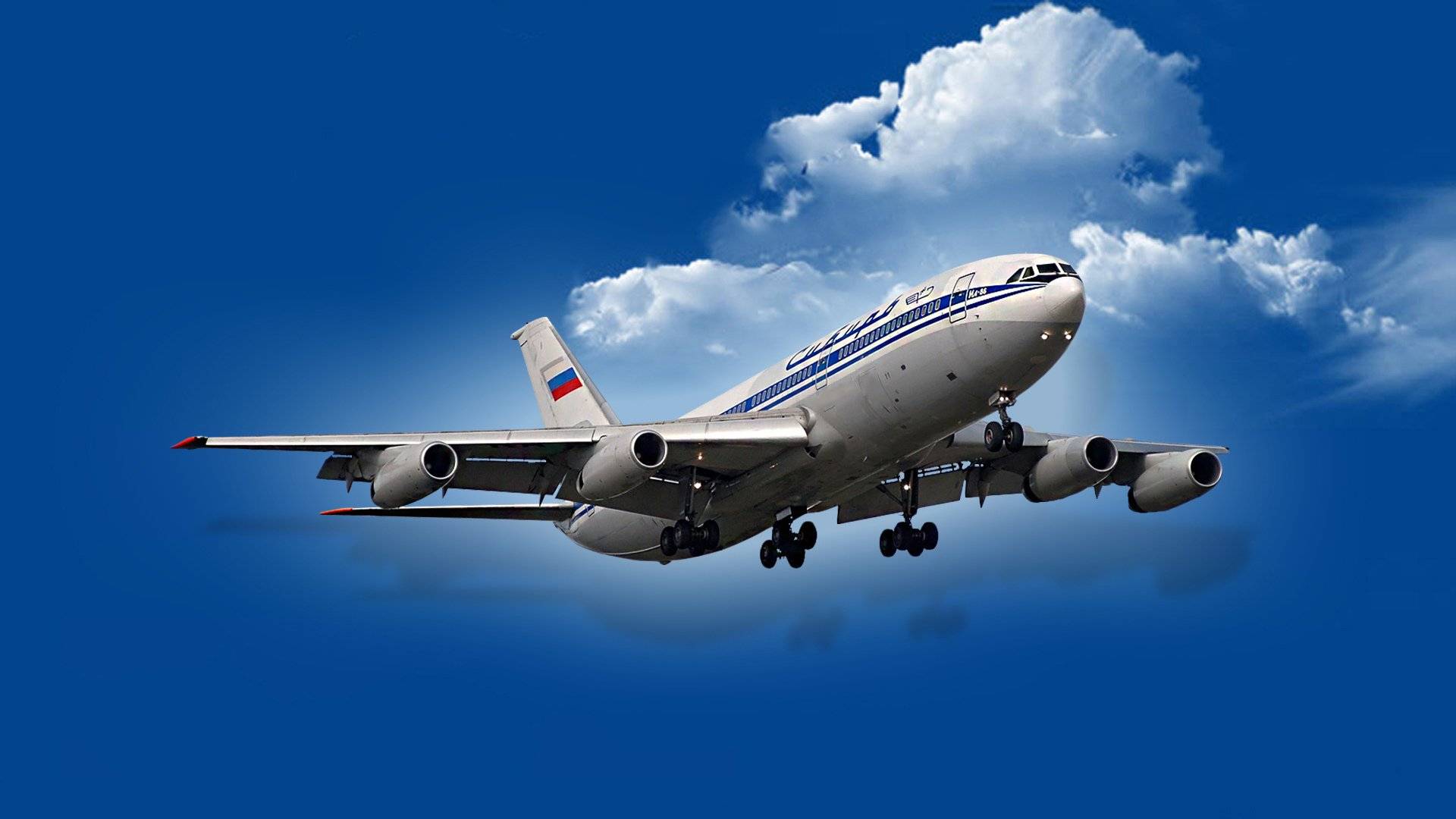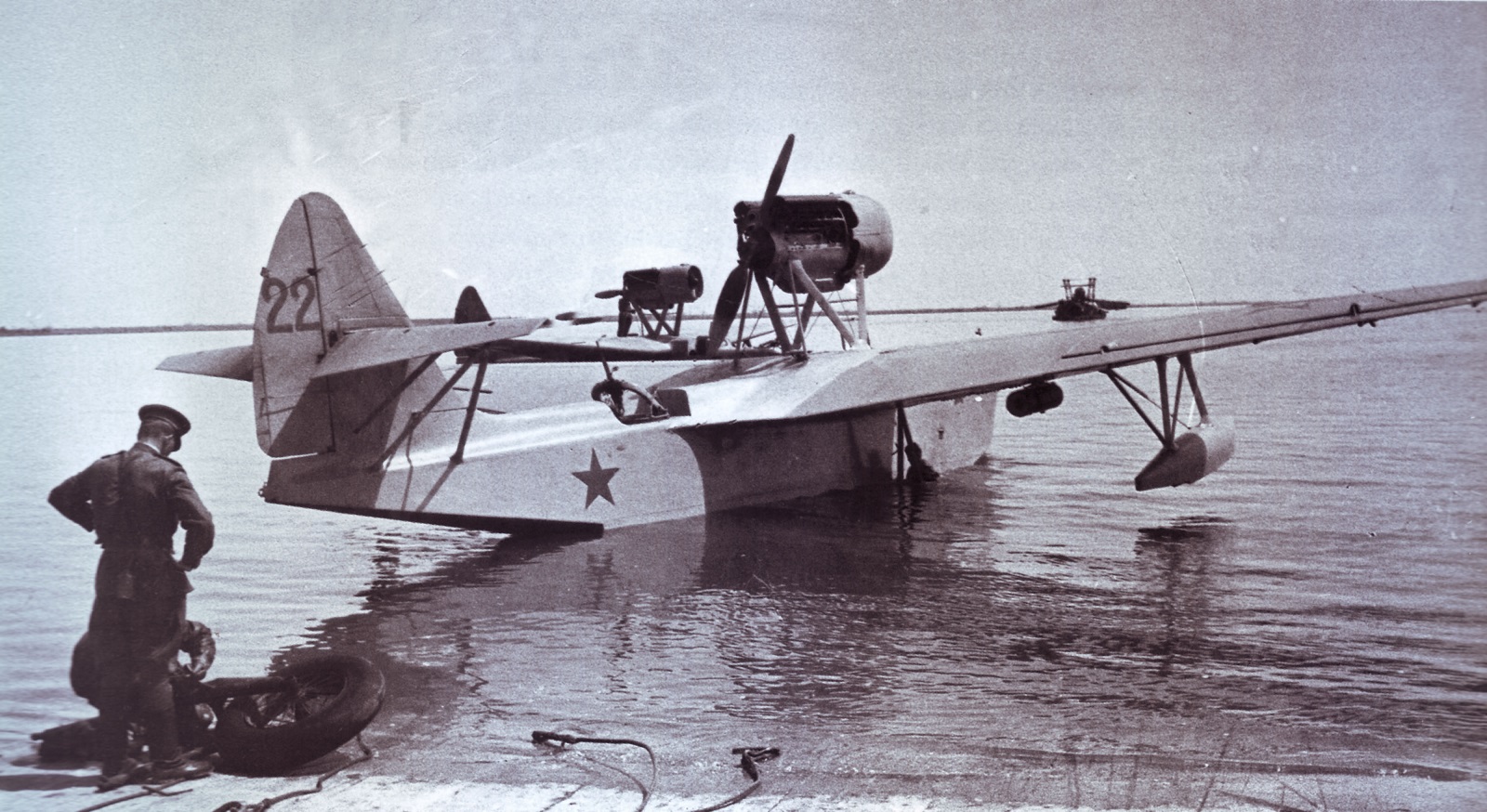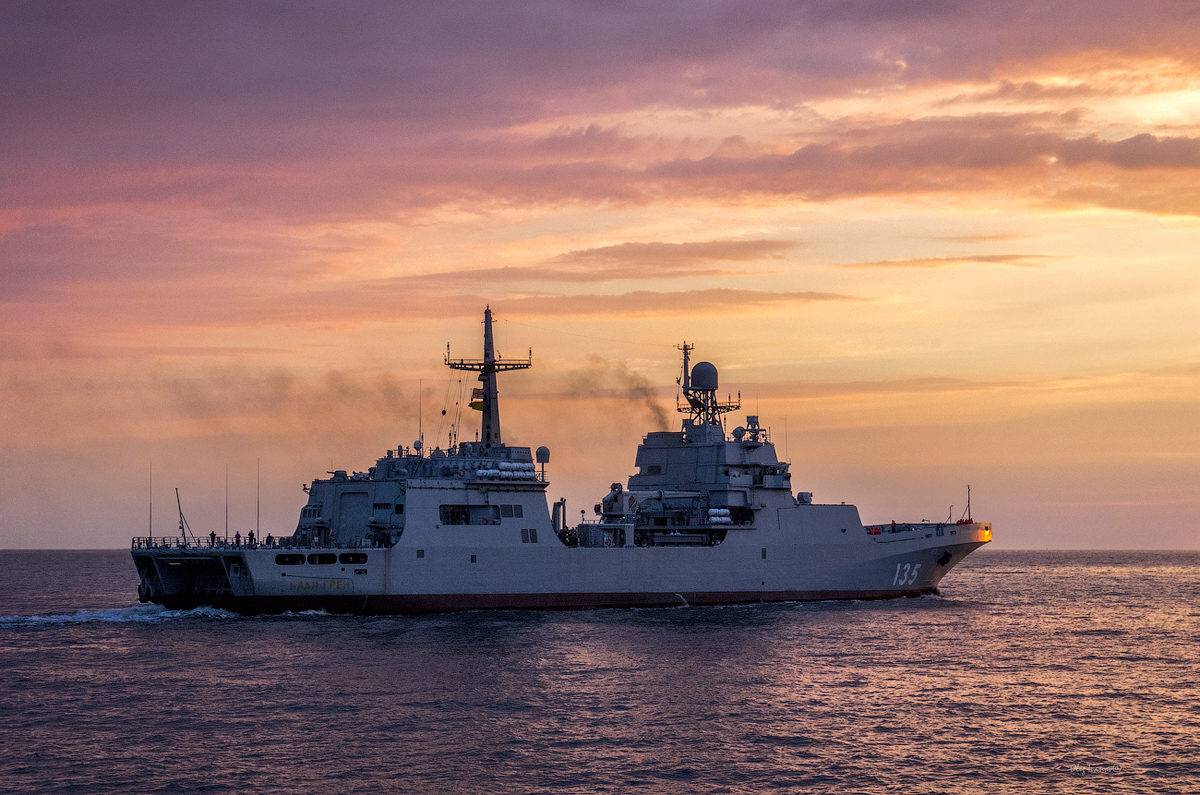Что думают военные?
Командир 95-й экспедиционной эскадрильи ВВС США рассказал изданию Aviation Week, что у F-22 есть существенный недостаток: «Раптор» не в состоянии отслеживать ночью полеты российских самолетов, поскольку не имеет специальной оптики, работающей и в видимом спектре, и в инфракрасном.
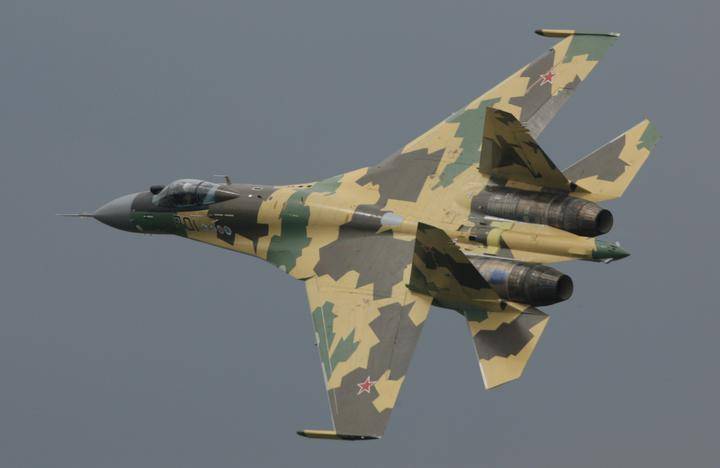 Су-35. Фото: army.lv
Су-35. Фото: army.lv
Речь идет об оптико-локационной станции (ОЛС) Су-35. Также на F-22 нет РЛС бокового обзора и системы оповещения о ракетном нападении.
С целеуказанием не слишком здорово и в пределах одного самолета. Командир 95-й экспедиционной эскадрильи рассказывает Aviation Week: «Нам приходится буквально вертеть головой и искать чужой самолет, который видели некоторое время назад. Все это вместо того, чтобы наблюдать координаты этого самолета на шлеме».
Военный обозреватель издания The National Interest Дейв Маджумдар специально слетал в командировку в элитное 1-е истребительное крыло ВВС США, чтобы убедиться в возможностях F-22 Raptor. Пилоты этого подразделения тренируются воевать против российского Су-35, а также зенитно-ракетных комплексов С-300В4, С-400 и «Панцирь».
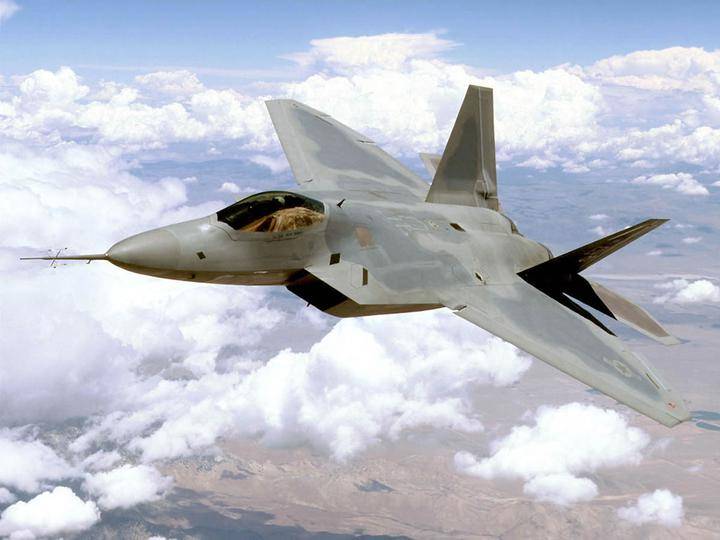 F-22/ Фото: rufabula.com
F-22/ Фото: rufabula.com
Полковник Пит Феслер, командующий 1-й авиакрылом, пояснил, что в тренировочных боях F-22 зачастую выходит победителем, случаи проигрыша очень редки. Как правило, истребители «противника» сбиваются на очень большом расстоянии. Феслер также посетовал на отсутствие нашлемной системы целеуказания, которая дает большое преимущество в ближнем бою.
3. Эксплуатация
По состоянию на октябрь 2010 года в ВВС США было передано 168 истребителей F-22. По состоянию на июль 2010 года F-22 состоял на вооружении следующих частей ВВС США:
- 1-е Истребительное крыло, авиабаза Лэнгли, штат Виргиния
- 27-я Истребительная эскадрилья
- 94-я Истребительная эскадрилья
- 192-е Истребительное крыло Национальной Гвардии
149-я Истребительная эскадрилья
, авиабаза Лэнгли, штат Виргиния
- 325-е Истребительное крыло
43-я Истребительная эскадрилья
, Тиндалл (авиабаза), штат Флорида — центр подготовки пилотов.
- 49-е Истребительное крыло, Холломэн (авиабаза), штат Нью-Мексико
- 7-я Истребительная эскадрилья
- 8-я Истребительная эскадрилья
- 44-я Группа Истребителей Резервного Командования ВВС, Холломэн (авиабаза), штат Нью-Мексико
301-я Истребительная эскадрилья
- 53-е Крыло
422-я испытательно-оценочная эскадрилья
, Эглин (авиабаза), штат Флорида
- 57-е Крыло
433-я эскадрилья боевого применения
, Неллис (авиабаза), штат Невада — в 10 милях к северо-востоку от Лас-Вегаса
- 412-е испытательное крыло
411-я испытательная эскадрилья
, Эдвардс (авиабаза), штат Калифорния — в 60 милях к северу от Лос-Анджелеса
- 3-е Крыло, Элмендорф (авиабаза), штат Аляска
- 90-я Истребительная эскадрилья
- 525-я Истребительная эскадрилья
- 477-я Группа Истребителей Резервного Командования ВВС
302-я Истребительная эскадрилья
, Элмендорф (авиабаза), штат Аляска
- 15-е Крыло
19-я Истребительная эскадрилья
, Хиккэм (авиабаза), штат Гавайи
- 154-е Истребительное крыло Национальной Гвардии, Хиккэм (авиабаза), штат Гавайи
199-я Истребительная эскадрилья
В 2006 году были проведены учения «Норден Эйдж», в которых проводились учебные воздушные бои 12 истребителей F-22 с F-15, F/A-18C и F/A-18E. За первую неделю учений самолёты F-22 условно сбили 144 самолёта противника без потерь со своей стороны.
F-22 не принимал участия в военной операции западной коалиции в Ливии по ряду причин. В ходе этой операции ВВС США сообщили, почему они не будут модернизировать системы связи F-22, а ещё несколькими месяцами ранее из-за подозреваемых неполадок бортовых систем генерации кислорода ввели временное ограничение на высоту полёта во время тренировочных вылетов. По мнению российского журналиста Василия Сычёва, такое поведение американских военных заставляет задуматься о реальных возможностях «Раптора»
2. Особенности самолета
В основу проектирования самолета положен принцип обеспечения повышенной выживаемости за счёт реализации принципа «First look — first kill» (первый обнаружил — первый поразил). Для этого широко использованы технологии снижения заметности («Stealth»). Важным, характерным для истребителей 5-го поколения конструктивным решением, снижающим заметность самолета, является размещение штатного вооружения во внутренних отсеках. F-22 имеет и внешние подвески, но их применение ухудшает малозаметность и является компромиссным шагом с целью повысить универсальность самолета.
2.1. Планер
Особенности геометрии самолета (на немецком)
В конструкции планера самолета доля полимерных композиционных материалов (ПКМ) составляет не менее 40 процентов (по другим данным 60 процентов), из них не менее 30 процентов приходится на термопластичные углепластики, широко применены радиопоглощающие материалы РПМ. В частности РПМ конструктивно оформляет кромки крыла самолёта. Большая часть конструкции выполнена из ПКМ на основе бисмалеимидов — класс термостойких полимеров, работоспособных при температурах до 230 градусов. Вторые по значению полимерные композиты представлены термопластичными углепластиками, в частности материалом Avimid K-III фирмы «Дюпон», к достоинствам которых, помимо прочности, ремонтопригодности и термостойкости, относятся лучшие характеристики допускаемой повреждаемости.
Контуры щелей, образующихся в местах соединения фонаря кабины с фюзеляжем, створки отсеков шасси и вооружения имеют пилообразную форму, что также обеспечивает эффективное рассеивание электромагнитной энергии и предотвращает её прямое отражение в направлении приемопередающей антенны РЛС противника. Крыло — ромбовидное, вертикальный стабилизатор V-образной формы.
Проектирование самолёта велось с учётом требований боевой живучести. По целому ряду данных, живучесть конструкции планера решена применительно к осколочно-фугасному зажигательному (ОФЗ) снаряду, составляющему основу боекомплекта российских 30-мм авиационных пушек.
2.2. Двигатели
Двигатели P&W F119-PW-100 с плоским реактивным соплом для снижения ИК-заметности
F-22 оснащен двумя турбореактивными двухконтурными двигателями с форсажными камерами (ТРДДФ) Pratt & Whitney F119-PW-100 с тягой 15876 кгс, и оснащенными управляемым в вертикальной плоскости вектором тяги. Данные двигатели имеют бесфорсажную тягу около 11000 кгс и позволяют самолету совершать полёт на сверхзвуковой скорости без использования форсажа, что является важным тактическим преимуществом.
Сопла двигателей имеют плоскую форму, снижающую заметность самолета в инфракрасном диапазоне. В конструкции сопловых устройств применен радиопоглощающий материал на основе керамики, который снижает радиолокационную заметность самолета.
2.3. Бортовое оборудование
F-22 оборудован РЛС AN/APG-77 с активной фазированной антенной решеткой. Антенна такого типа состоит из 1500 приемно-излучающих элементов. Основным достоинством такой антенны является электронное управление главным лепестком диаграммы направленности (аналог сканирования лучом) — нет нужды в механическом сканировании, что упрощает конструкцию и повышает надежность работы. Дальность обнаружения крупной аэродинамической цели типа истребитель (ЭПР >3 м²) до 270—300 км, крылатая ракета (0,1-0,5 м²) — до 150 км, наземные цели — до 70 км.
Плакат USAF, обзор основных особенностей и вооружения
Japan Wanted to Purchase F-22s
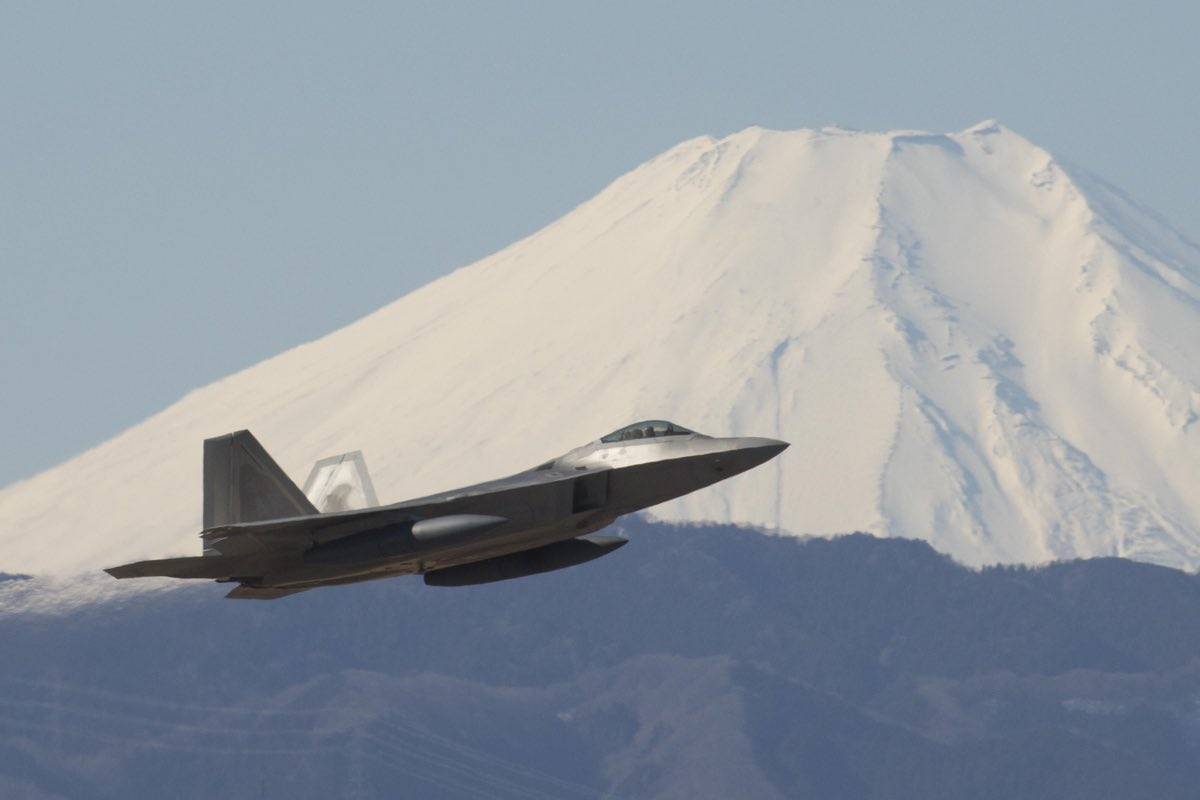
A U.S. Air Force F-22 Raptor from the 90th Fighter Squadron at Joint Base Elmendorf-Richardson, takes off at Yokota Air Base, Japan, Feb. 13, 2017. The F-22 Raptors stopped at Yokota AB before traveling on to Royal Australian Air Force Base, Tindal. As the Air Force’s Western Pacific airlift hub, Yokota supports transient aircraft as they conduct mission throughout the Indo-Asia Pacific Region.
Yasuo Osakabe, U.S. Air Force
Due to China’s increasingly advanced air and naval weaponry, Japan has found itself in need of upgrading its own military arsenal. One of those needs is an answer to China’s Chengdu J-20 stealth fighter jet. Japan has started to gear up for production to replace their Mitsubishi F-2 with a new F-3, but what the Japanese Air Self-Defense Force would rather do is to purchase Lockheed’s F-22 Raptors. Unfortunately, the F-22 cannot be sold to anyone outside of the United States, so it looks like they’ll have to develop a new fighter. They may also consider purchasing the F-35s as they are available for purchase to US Allies and while slightly less capable, they get a wider variety of mission types done at a slightly lower cost.
GBU-39 Small Diameter Bomb
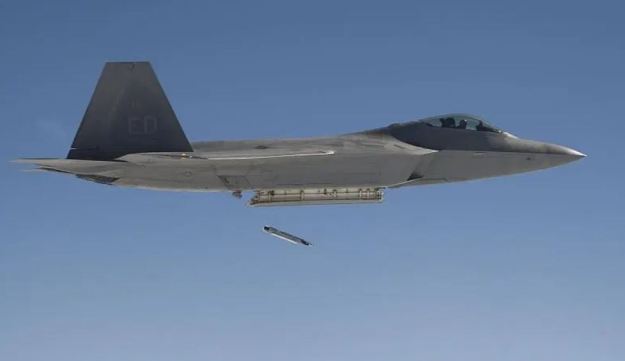
f-16.net
The SDB system employs a smart carriage capable of carrying four 250-lb class guided air-to-surface munitions. It is capable of destroying high-priority fixed and stationary targets from Air Force fighters and bombers in internal bays or on external hard-points. SDB increases aircraft loadout, decreases the logistical footprint, decreases collateral damage, and improves aircraft sortie generation times.
The SDB provides a transformational capability to the warfighter increasing smart weapon carriage by placing up to four smart weapons per 1760 store location.
The weapon system is capable of standoff ranges in excess of 40 nautical miles. The system can be targeted and released against single or multiple targets. SDB target coordinates are loaded into the weapon before release either on the ground or in the air by the aircrew. Once the weapon is released, it relies on GPS/INS to self-navigate to the desired impact point.
General CharacteristicsPrimary Function: Guided air-to-surface weaponContractor: Boeing Co.Range: More than 40 nautical miles (46 miles)Guidance System: Global Positioning System/Inertial Navigation SystemUnit cost: Approximately $40,000Initial operational capability: October 2006Projected Inventory: Total force, 24,000 munitions and 2,000 carriages
Source af.mil
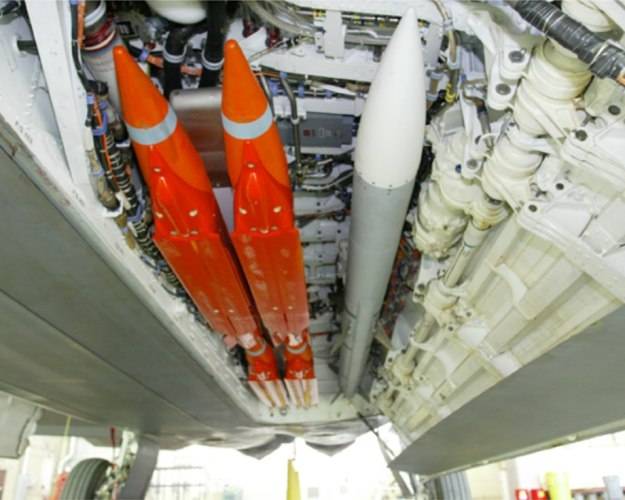
U.S. Air Force
The bay is fitted with the EDO Corp. LAU-142/A AVEL AMRAAM vertical ejection launcher which is a pneumatic-ejection system controlled by the stores management system. Raytheon AMRAAM air-to-air missile is an all-weather short- to medium-range radar-guided fire-and-forget missile, with a range of 50nm. The side bays can each be loaded with one Lockheed Martin / Raytheon AIM-9M or AIM-9X Sidewinder all-aspect short-range air-to-air missile.
First Official Flight of the F-22 Was in 1997
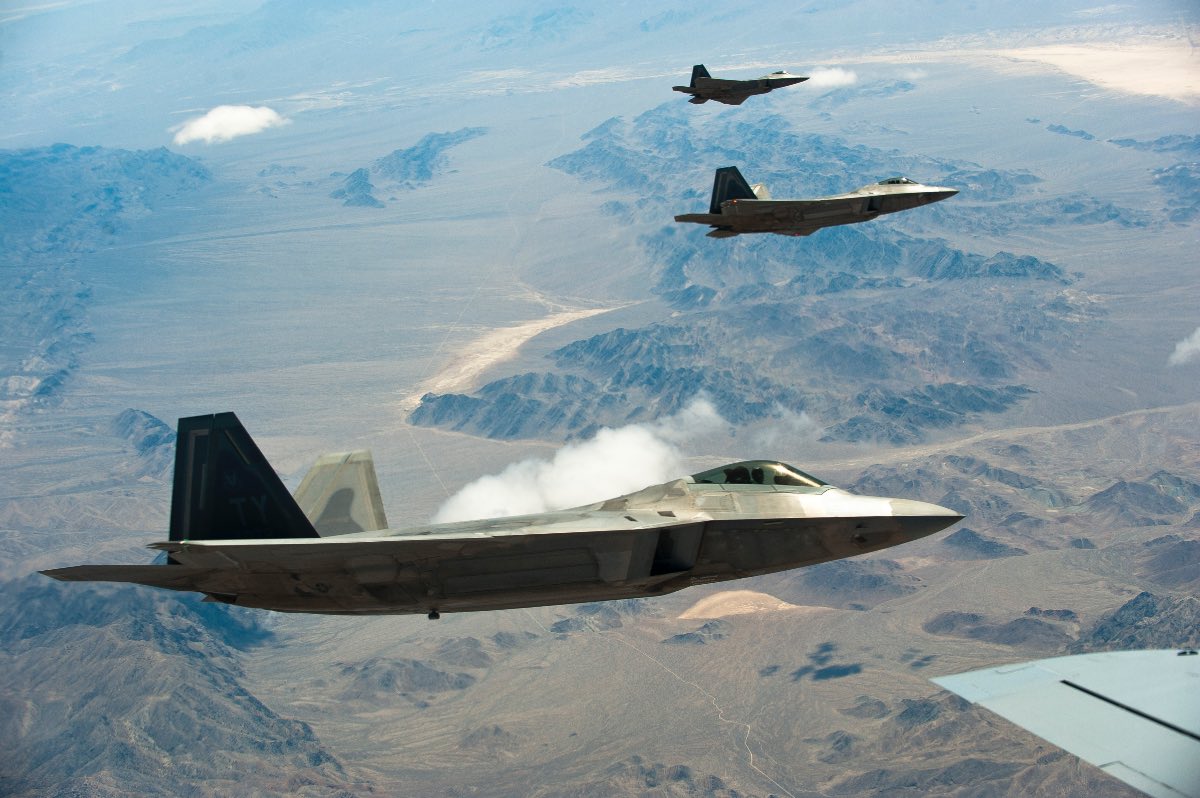
Three U.S. Air Force F-22 Raptors assigned to the 325th Fighter Wing, Tyndall Air Force Base, Fla., fly alongside a KC-135 Stratotanker assigned to the 93rd Air Refueling Squadron, Fairchild AFB, Wash., during Red Flag 14-3, July 17, 2014, over the Nevada Test and Training Range. Red Flag provides a series of intense air-to-air combat training exercises designed to increase combat readiness and effectiveness.
Airman 1st Class Thomas Spangler, U.S. Air Force
In September of 1997, the F-22 took its first flight in front of the hundreds of people that designed, engineered and built it over the years. A lot of factors led up to its first flight – 44,000 wind tunnel test hours, six years of research and development, and countless materials samples, to name a few. Paul Metz piloted the F-22, followed by Jon Beesley in the safety chase F-16 aircraft. Beesley put the F-16 in afterburner just to keep up with the F-22, a testament to this new, one-of-a-kind fighter. They completed a fifty-eight minute route around North Georgia, and Metz tapped the breaks upon landing, making the F-22 do a ceremonial bow to the excited crowd. This would be the first of nearly 3500 test flights before the F-22 became operational in 2005. These F-22 facts are compiled by Military Machine.
Some Question Its Usefulness in Small Wars
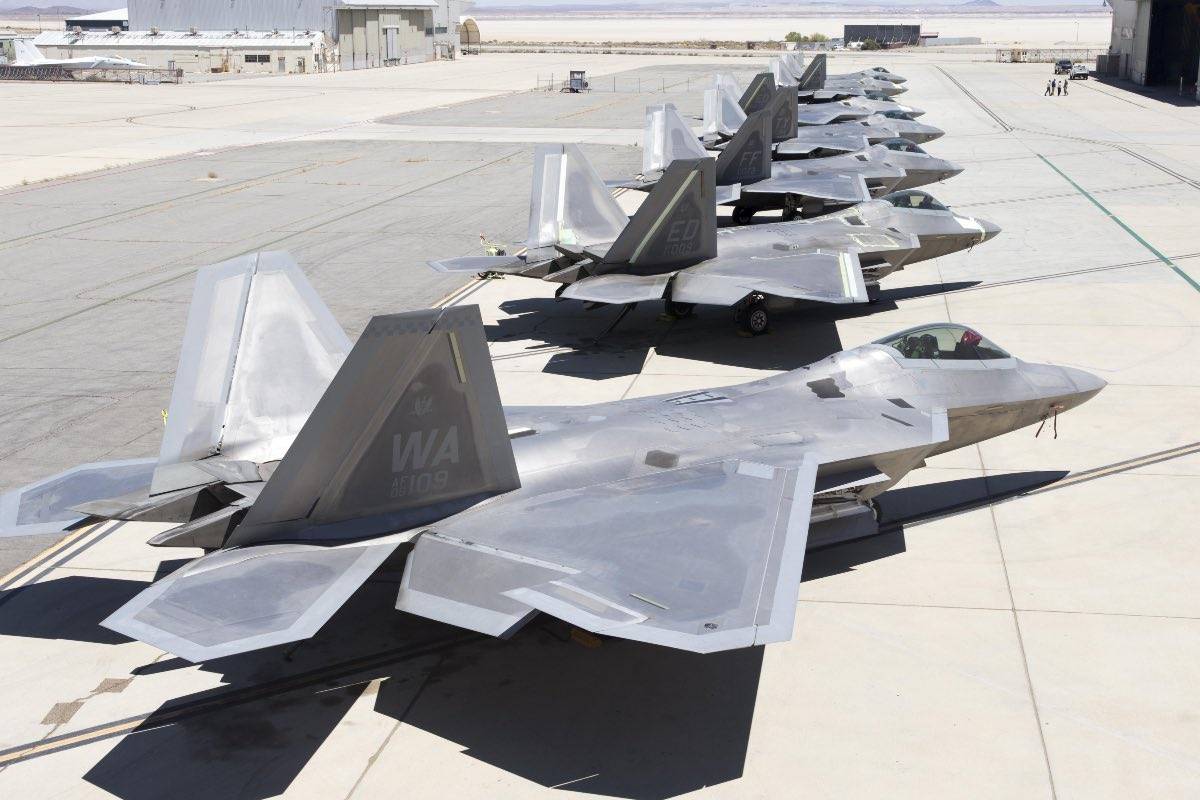
Seven F-22A Raptors sit outside the 411th Flight Test Squadron Aug. 10, 2016. Four operational jets from three different bases are at Edwards Air Force Base, Calif., for testing to help improve the long-term combat capability of the F-22 Raptor.
Christian Turner, U.S. Air Force
There is some criticism towards the F-22 and its use potential in “small wars”. Modern combat has been largely characterized by compact, moving targets that the F-22 wasn’t built to zone in on. While it is capable of launching GPS-guided missiles and comes equipped with SAR ground-looking radar, the F-22 Raptor is still heavily lacking in some of the optics and targeting technology found in combat helicopters and even the F-35. Further complicating the issue is its astronomical cost. Military leaders are left wondering whether it even makes sense to use these high dollar aircraft for any type of combat they weren’t specifically designed to dominate, limiting the use of the fleet over its lifetime significantly.
AIM-120D AMRAAM
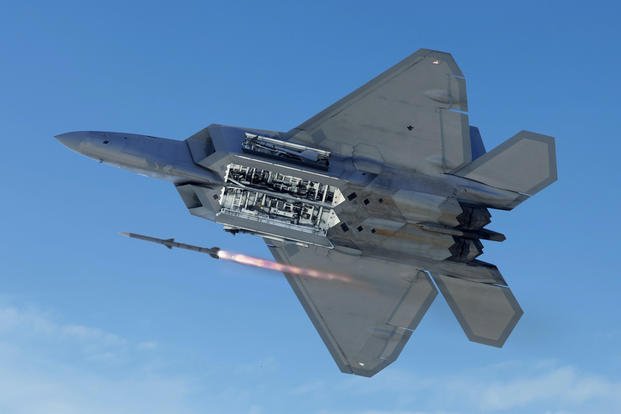
military.com
The AIM-120 AMRAAM is a medium-range, air-to-air missile designed to meet the requirements of the United States and allied nations. The AIM-120 missile is faster, smaller and lighter than its predecessor the AIM-7 Sparrow medium-range missile and also has improved capabilities against low-altitude targets. AMRAAM incorporates active radar seeker with mid-course inertial navigation making it less dependent on aircraft’s fire control radar. That capability enables simultaneous AMRAAM launching against different targets. For better performance AMRAAM can receive target location updates from the radar system of the launch aircraft. It has a blast fragmentation warhead detonated by a proximity fuse.
The combat proven AIM-120 AMRAAM missile was employed during military campaigns over Iraq, Kosovo and Bosnia. The Air Forces of 18 nations operate the AMRAAM missile. The AMRAAM missile is operational on the F-15, F-16, F/A-18, F-4F, JAS-39, Sea-Harrier and Tornado aircraft. Raytheon is integrating the AIM-120 on the Eurofighter-Typhoon, F/A-22A and Harrier II+. AIM-120’s flexibility concept allows it to be integrated on ground systems becoming a surface-to-air missile. It is being integrated on Norway’s NASAMS, Hawk-AMRAAM and HMMWV Surface-to-Air Systems.
The AIM-120D, formerly known as the AIM-120C8, is the latest development of the AMRAAM missile family designed and build by Raytheon and developed under P3I Phase 4 initiative. AIM-120D features a new navigation system and hardened design for internal weapons bay carriage. The United States Air Force (USAF) assessment of the AIM-120C variant on the F/A-22 Raptor aircraft determined that vibration levels in certain frequencies are harmful to the missile’s electronics. AIM-120D AMRAAM missile variant tries to fix it. In April 2006 the USAF released that the AIM-120D was undergoing testing on the F-22 aircraft monitored by Raytheon at Edwards Air Force Base, California. AIM-120 new features encompass: an enhanced data link, improved kinematics and GPS Inertial Measurement Unit. Source deagel.com
Raptor vs the PacRim
Since
1991, the world strategic environment has changed dramatically. While
most media and political attention remains focused on the War on
Terror in the low-tech Islamic world, the larger long-term strategic
issue is the ongoing arms race in the Asia-Pacific-Indian region.
Within the PacRim itself, the growth of China as a regional military
and economic superpower is the single greatest strategic change seen
since the fall of the Soviet Union.
By
2015 we can expect to see China become the largest single operator of
late-generation Sukhoi Su-27/30 derivative fighters globally, flown
in a high-low mix with indigenous Lavi-like Chengdu J-10 fighters. By
then, the PLA-AF will be operating A-50 AWACS and Il-78MKK Midas
aerial refuelling tankers. New-build Badgers, armed with indigenous
and likely Russian derived cruise missiles, will replace much of the
legacy fleet. If the converging Russian push to export Backfires and
Bears meets with the PLA-AF leadership’s ambitions to operate these
aircraft, China could well end up with a fleet of up to 40 upgraded
Tu-22M3 Backfires along with a regiment or more of late build Tu-95MS
Bears, all armed with cruise missiles and the latter likely to be
mass produced in China.
In
strategic terms, the PacRim will be faced with a technologically
evolved derivative of the very same capability package that terrified
NATO planners during the last half decade of the Cold War. With
Backfires providing a reach of circa-2,500 NMI, and Bears 4,000 NMI,
armed with cruise missiles, there are no nations in the PacRim
outside the footprint of the PLA-AF’s strategic forces.
For
the US, with its principal conventional deterrent capabilities in the
Pacrim sited at Andersen AFB in Guam, Kadena and Misawa in Japan, and
naval CVBGs based in Japan and US PacRim ports, China’s growing
capabilities will present a genuine strategic challenge. Guam and
Kadena fall under the footprint of the Backfire, or refuelled Sukhoi
fighters. Naval CVBGs, having lost the A-6E, F-14 and dedicated
aerial refuelling tankers, are largely limited in reach without US
Air Force tanker support, and by 2015 equipped mostly with the
limited F/A-18E/F.
The
F-22A is the strategically pivotal asset for the US in the PacRim,
providing unmatched capability in several areas: the air superiority
capability to balance Chinese Flanker numbers, the defence
suppression capability to defeat Chinese S-300/400 missile systems,
the penetration capability to shut down PLA-AF and PLA-N airfields,
and the cruise missile engagement capability to blunt any pre-emptive
or sustained strike campaign conducted by a future PLA-AF strike
force. The US deterrent posture in the PacRim region will hinge
mostly on available numbers of F-22As in this theatre.
For
Australia, the F-22A continues to represent the single best choice as
a replacement new build combat aircraft for the RAAF, as it is the
only type which will be strategically credible in the post 2015
PacRim environment.
A Helmet Upgrade 10 Years in the Making Will Make F-22 More Effective
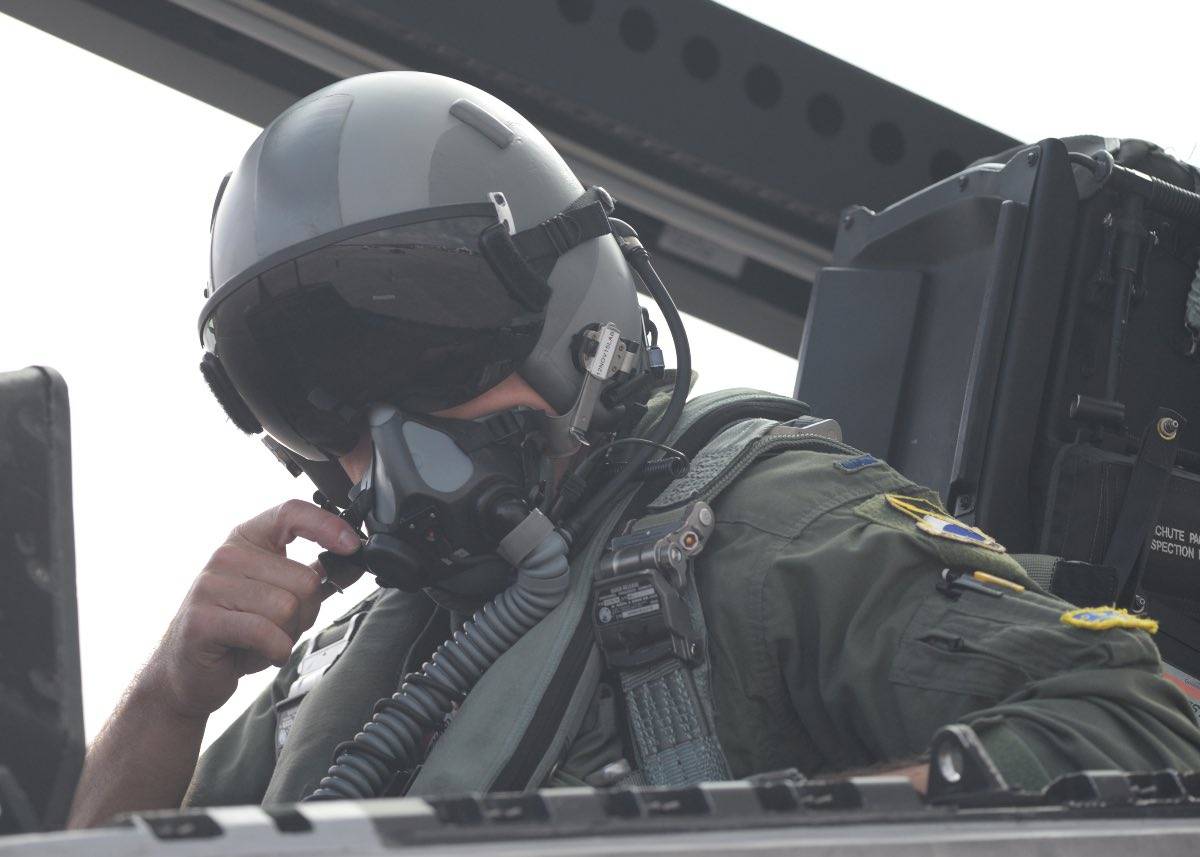
First Lt. Brady Amack, 95th Fighter Squadron F-22 Raptor pilot, conducts final check before takeoff from Tyndall Air Force Base, Fla., Nov. 5 during a training mission. The 95th FS projects unrivaled combat air power supporting national military objectives and Combatant Commander requirements through strategic application of 5th generation air dominance fighter aircraft and personnel.
Senior Airman Sergio A. Gamboa, U.S. Air Force
Another upgrade the US Air Force is looking to make on the F-22 is the helmet technology for its pilots. In 2015, the USAF published a development schedule and requirements list to be completed by 2020. The helmet upgrades have been in talks for over ten years, but budget issues have repeatedly hindered the maturation of the project.
According to the requirements, the program will utilize the Gentex HGU-55/P helmet either in its current form or modified for F-22 Raptor pilots. One of the functions it will require is day and night cueing of weapons high off-boresight (HOBS) which will go hand in hand with the recently integrated AIM 9X Sidewinder HOBS missile. The helmet will also need to display video feeds and other data from these devices. The dedication to the helmet update is an encouraging sign that the USAF is getting behind the future of the F-22s again.
Sixth Generation Fighter May Come Next
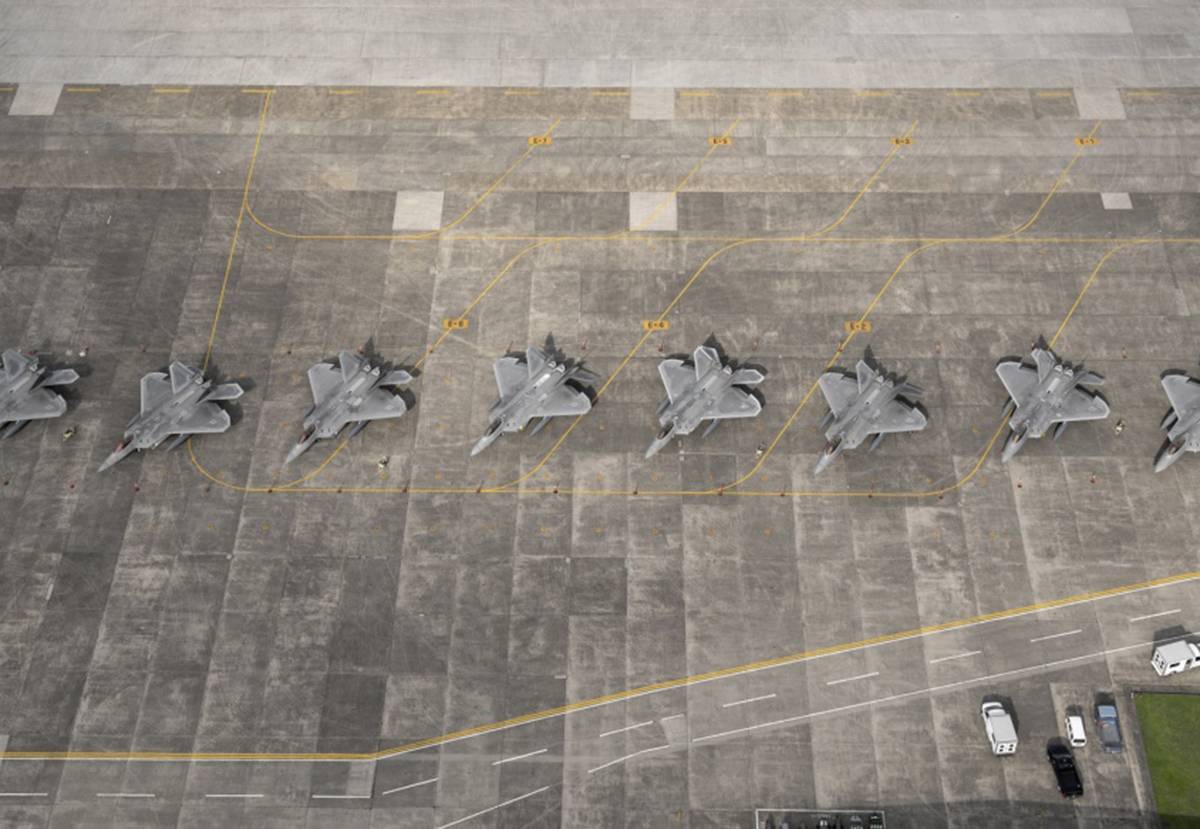
Yasuo Osakabe
With an approximated cost of $140 million each, how long should a single F-22 be able to last? Well, according to Lockheed Martin, the F-22 will last up to and potentially beyond 40 years. The Government Accountability Office estimates that fixing and flying the F-22s throughout their lifespan will cost just shy of $60 billion dollars. The F-22 conceived in the 1980s, so the objectives required for a state of the art air defense vehicle in todays’s military environment are now somewhat disconnected from the Raptor. Which is where the idea for the sixth generation fighter came into play. The sixth generation fighter will have a longer lifespan and be more adept to today’s military challenges. However, if anything is learned from the development of the F-22, its that the longer it takes to develop the more likely it is that the military landscape will change by the time it becomes operational. These F-22 facts are compiled by Military Machine.
6. Тактико-технические характеристики F-22
Источники
6.1. Технические характеристики

Проекции самолёта F-22A
- Размах крыла: 13,56 м
- Длина самолета: 18,90 м
- Высота самолета: 5,09 м
- Площадь крыла: 78,04 м²
- Площадь В. О.: 16,54 м²
- Площадь Г. О.: 12,63 м²
- Экипаж: 1 человек
- Масса:
- БРЭО: 858 кг
- Пустого: 19700 кг
- Нормальная взлетная: 30206 кг (100 % топлива)
- Боевая: 25776 кг (52 % топлива)
- Максимальная: 38000 кг
- Нагрузка:
- Нормальная: 1116 кг (6+2 УР)
- Максимальная: 10370 кг
- Топливо: 9367 кг
- ПТБ: 7200 кг
Нагрузка на крыло:
- при максимальной взлётной массе: 487 кг/м²
- при нормальной взлётной массе: 387 кг/м²
- боевая (6+2 УР, 52 % топлива): 330 кг/м²
Процентный состав материалов в конструкции планера:
- Алюминиевые сплавы: 16 %
- Титановые сплавы: 39 %
- Композиты: 24 %
ЭПР: по данным различных источников, от 0,0001 до 0,3—0,4 м² (подробнее см. ниже)
Pratt & Whitney F119
6.2. Двигатель
- Тип двигателя: 2х ТРДДФ Pratt & Whitney F119-PW-100
- Статическая форсированная тяга: 15876 кгс
- Тяговооруженность:
- боевая (6+2 УР, 52 % топлива): 1,23
- при нормальной взлетной массе: 1,05
- при максимальной взлетной массе: 0,83
Трансзвуковой полет над авианосцем Джон К. Стеннис
6.3. Лётные характеристики
- Максимальная скорость: 2100 км/ч (2,0 М) (по другим данным 2600 км/ч (2,42 М))
- Максимальная бесфорсажная скорость: 1850 км/ч (1,78 М)
- Крейсерская скорость: 950 км/ч (0,9 М)
- Дальность:
- без ПТБ, боевая: 1900 км
- без ПТБ, нормальная: 2500 км
- 100 % внутри + 2 ПТБ: 3330 км
- 100 % внутри + 4 ПТБ: 5700 км
- на скорости 1,78 M: 1300 км
- Боевой радиус: 760—1100 км
РЛС с АФАР APG-77
6.4. Авионика
Источники
- БРЛС: РЛС с АФАР APG-77
- Максимальная дальность обнаружения: до 210 км (по другим данным до 270—300 км)
- Масса: 553,7 кг
- Потребляемая мощность: 16533 Вт
- Объём: 0,565 куб.м
- Расход охлаждающего воздуха: 4,38 кг/мин
- Расход охлаждающей жидкости: 33,9 л/мин
- Диаметр АФАР: 0,813 м
- масса: 219,1 кг
- Объём: 0,275 м³
- Рассеиваемая мощность: 8278 Вт
- Расход охлаждающей жидкости: 11,3 л/мин
F-22 на фоне вечернего неба
”’AN/ALR-94”’ Станция предупреждения об облучении, состоит из 30 датчиков, расположенных в фюзеляже, позволяет получать информацию о радиолокационной обстановке и применять оружие, дальность действия 250 миль
”’AN/AAR 56”’ ИК система предупреждения о ракетной атаке
6.5. ЭПР F-22
В опубликованной в «Вестнике Российской Академии Наук» том 73, № 9, с. 848 (2003) статье «Фундаментальные и прикладные проблемы стелс-технологий» в основу которой положено научное сообщение на Президиуме РАН, авторы Погосян, Михаил Асланович — чл.-корр. РАН, директор ГУП авиационно-промышленного комплекса «Сухой» и Лагарьков, Андрей Николаевич — чл.-корр. РАН, директор Института теоретической и прикладной электродинамики Объединенного института высоких температур РАН, дают такую оценку ЭПР истребителя F-22, цитата:
1 марта 2010 года Премьер-министр Владимир Путин посетил Опытно-конструкторское бюро «Сухого». Во время визита, главный конструктор самолета ПАК-ФА Т-50 — А. Н. Давиденко сказал следующее:
Существует и другая точка зрения на показатели ЭПР, опубликованная на сайте GlobalSecurity.org, в статье, посвященной F-35:
Сайт F-16.net позднее опубликовал данные о характеристиках F-22 со ссылкой на компанию Lockheed Martin:
Судить о достоверности данных, предоставляемых американскими и российскими специалистами в данный момент сложно, потому что F-22 Raptor ещё никогда не принимал участие в боевых действиях, однако, можно сделать некоторые выводы, учитывая практику боевого применения малозаметных ударных самолетов F-117: в ходе войны НАТО против Югославии был сбит один (данные различных источников расходятся, по заявлениям США, был потерян только один самолет, по данным российского исследователя Владимира Ильина, ссылающегося на сербские источники — три) F-117 и ещё один был поврежден, совершил вынужденную посадку. Уничтоженный самолет был сбит зенитно-ракетной системой С-125 (ракетой 5В27Д 1976 года выпуска производства завода АВИТЕК), способной атаковать цели с ЭПР не менее 0,3—0,5 м² (в зависимости от модификации), однако, заявленная американцами эффективная поверхность рассеивания F-117 составляет 0,025 м², что делало бы невозможным его обнаружение и, тем более, уничтожение данной зенитно-ракетной системой. Этот факт может свидетельствовать о дезинформации как с американской стороны (о реальной ЭПР самолетов), так и с российской (о реальных возможностях зенитно-ракетных систем).

